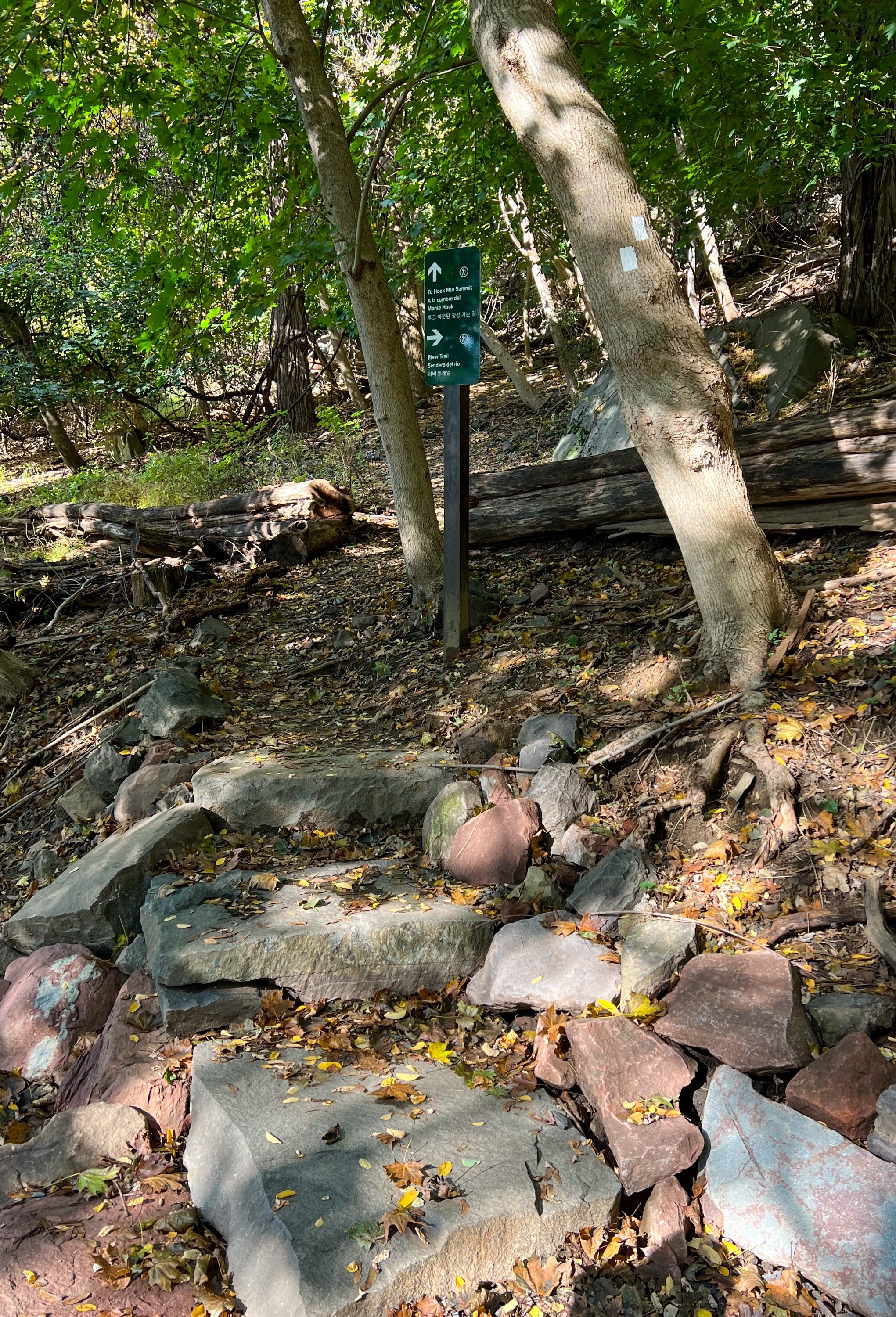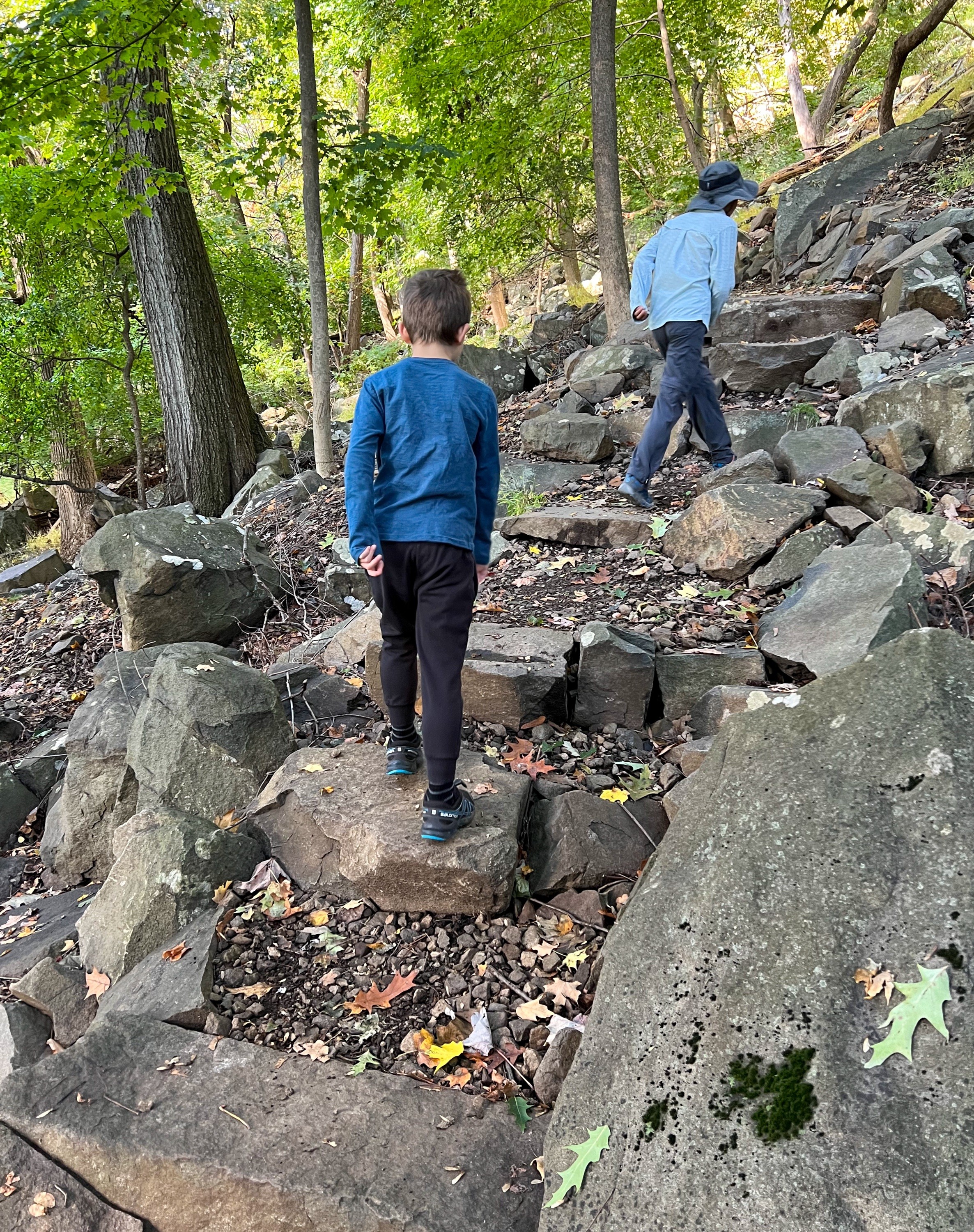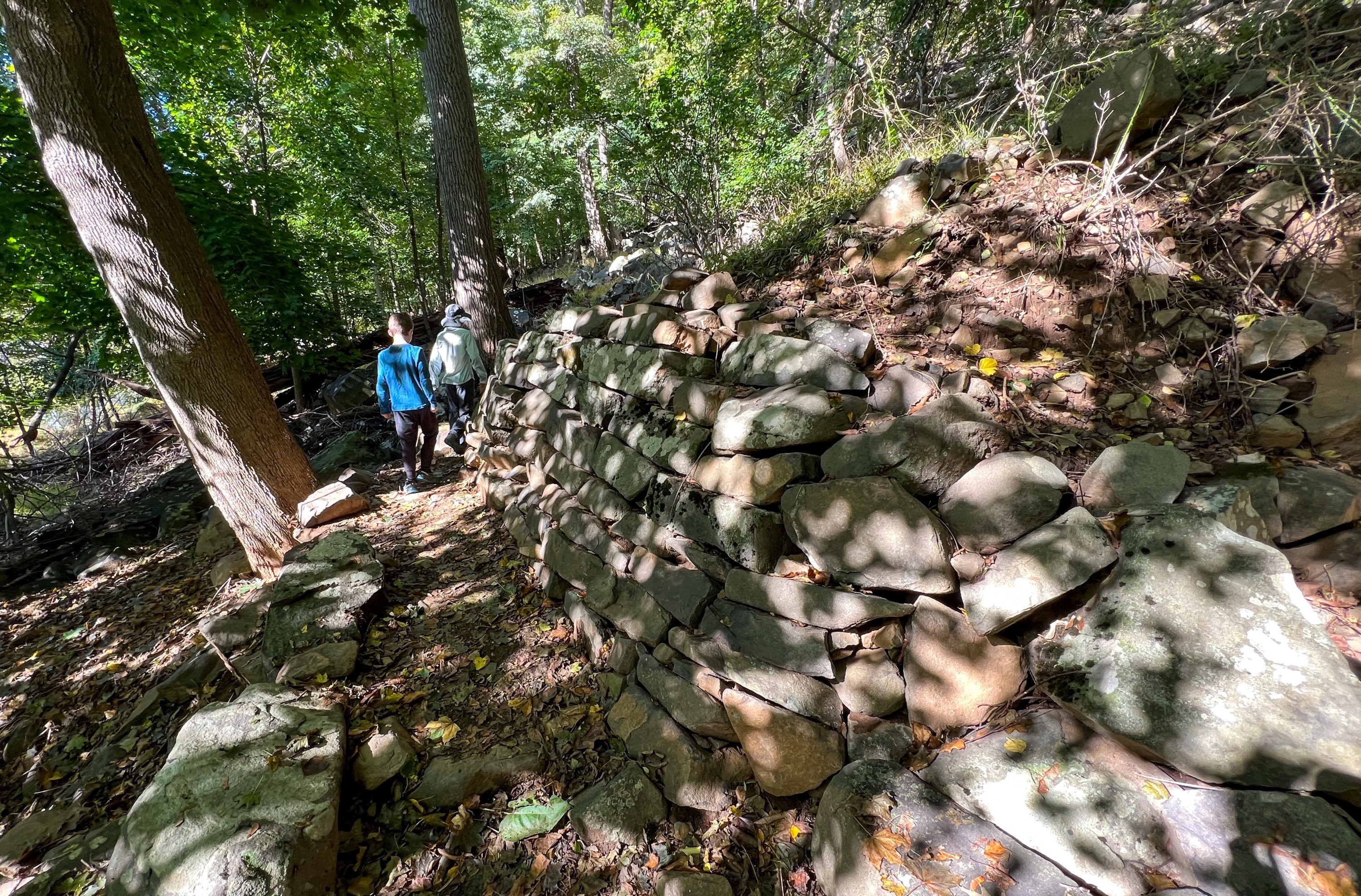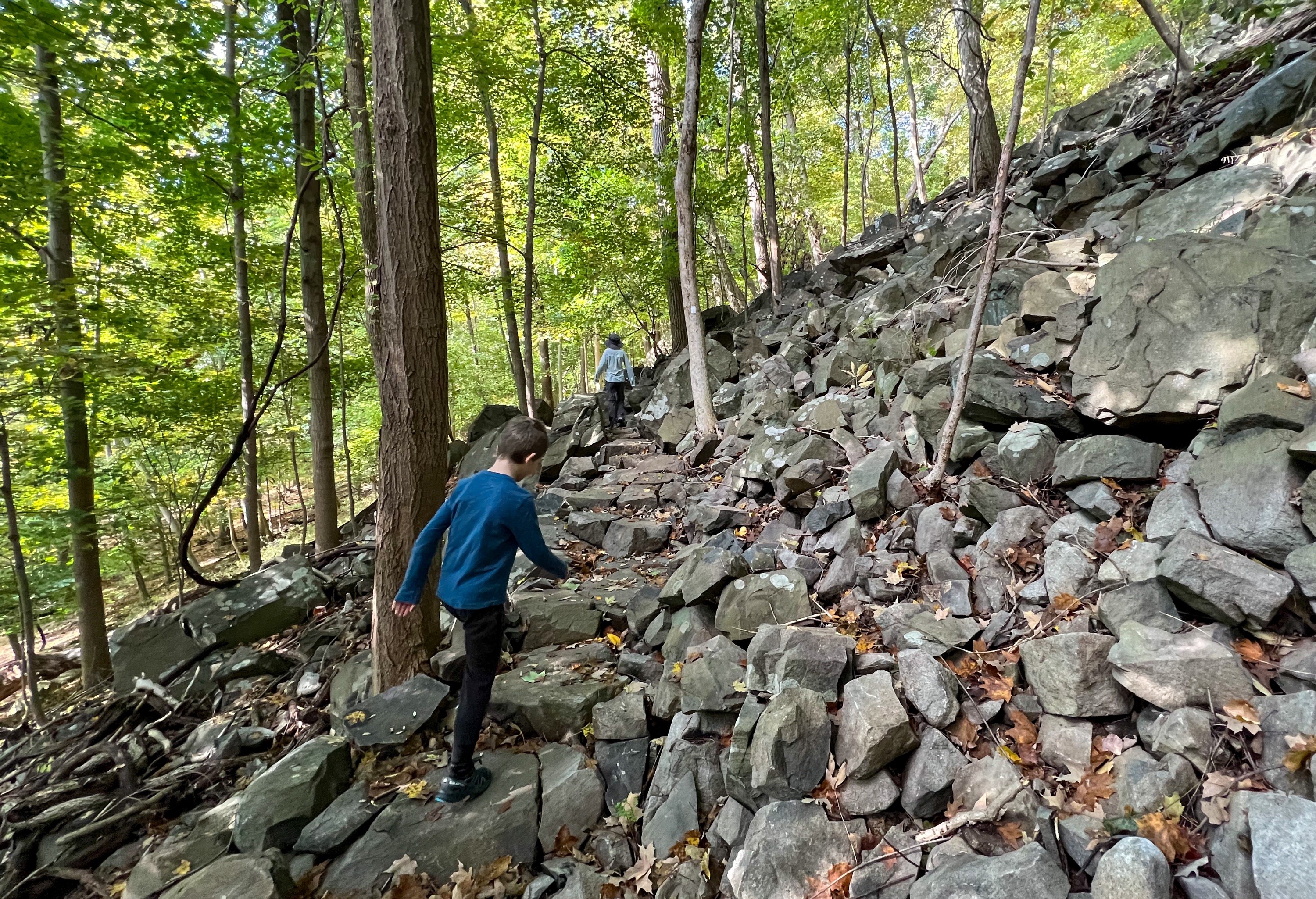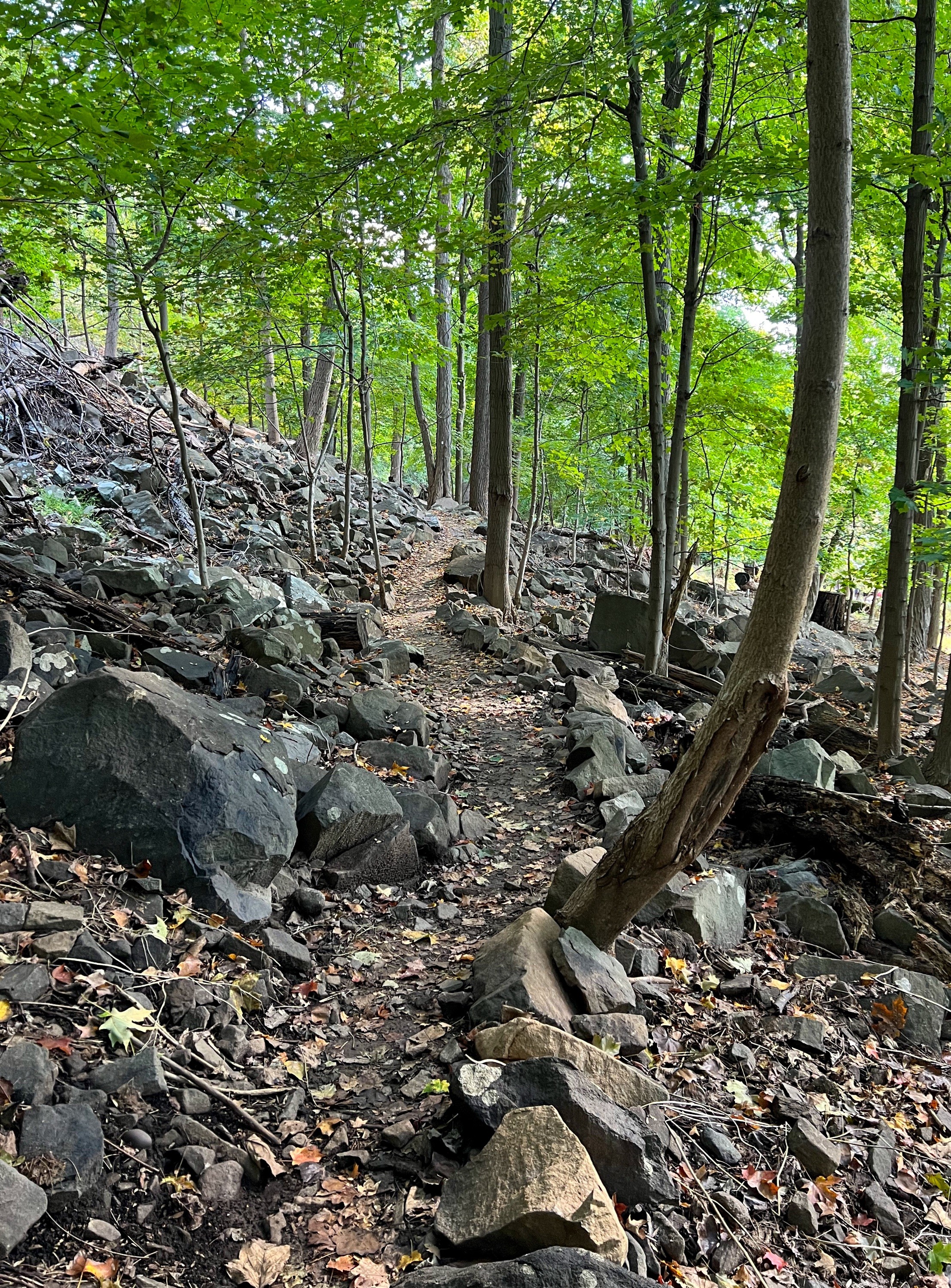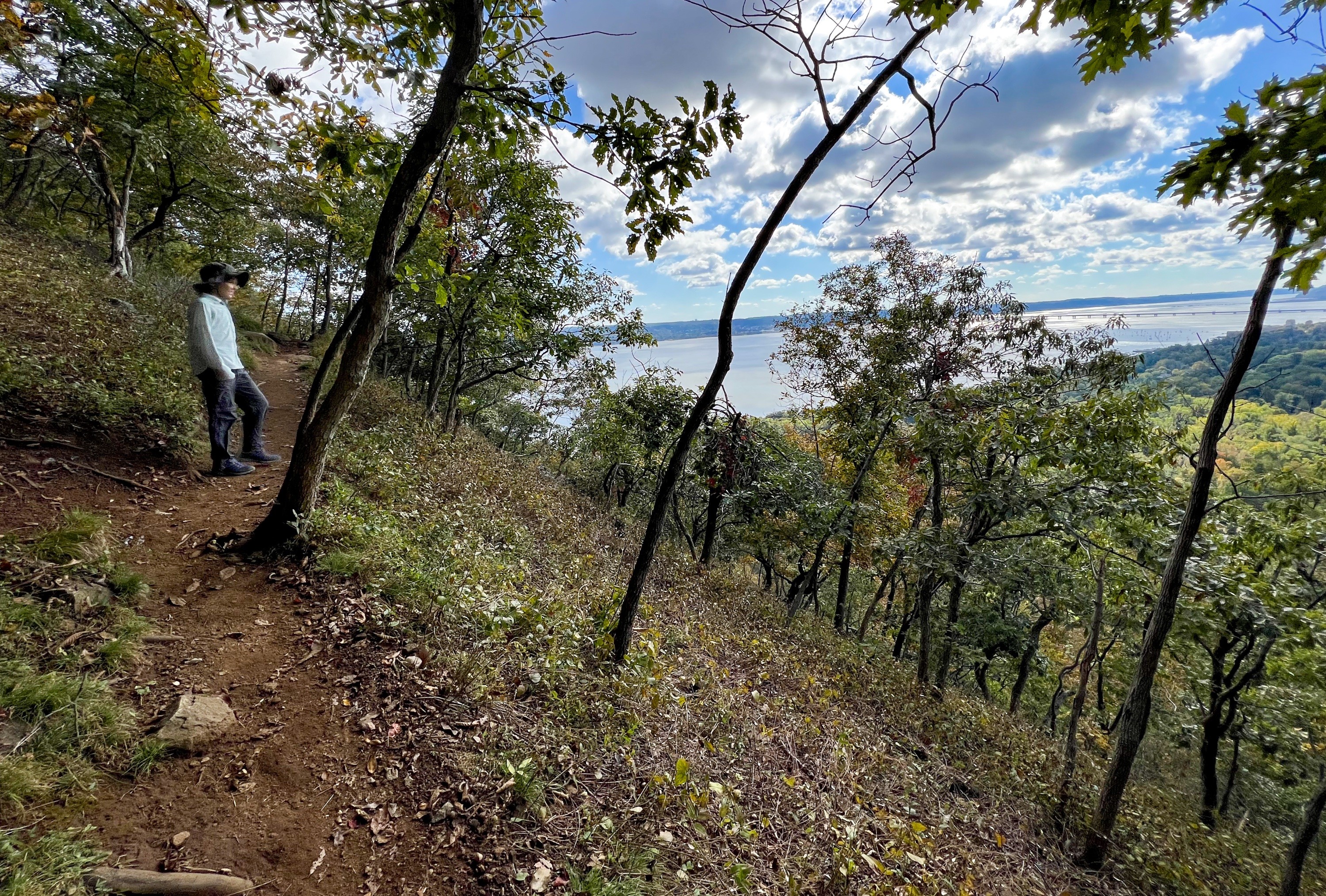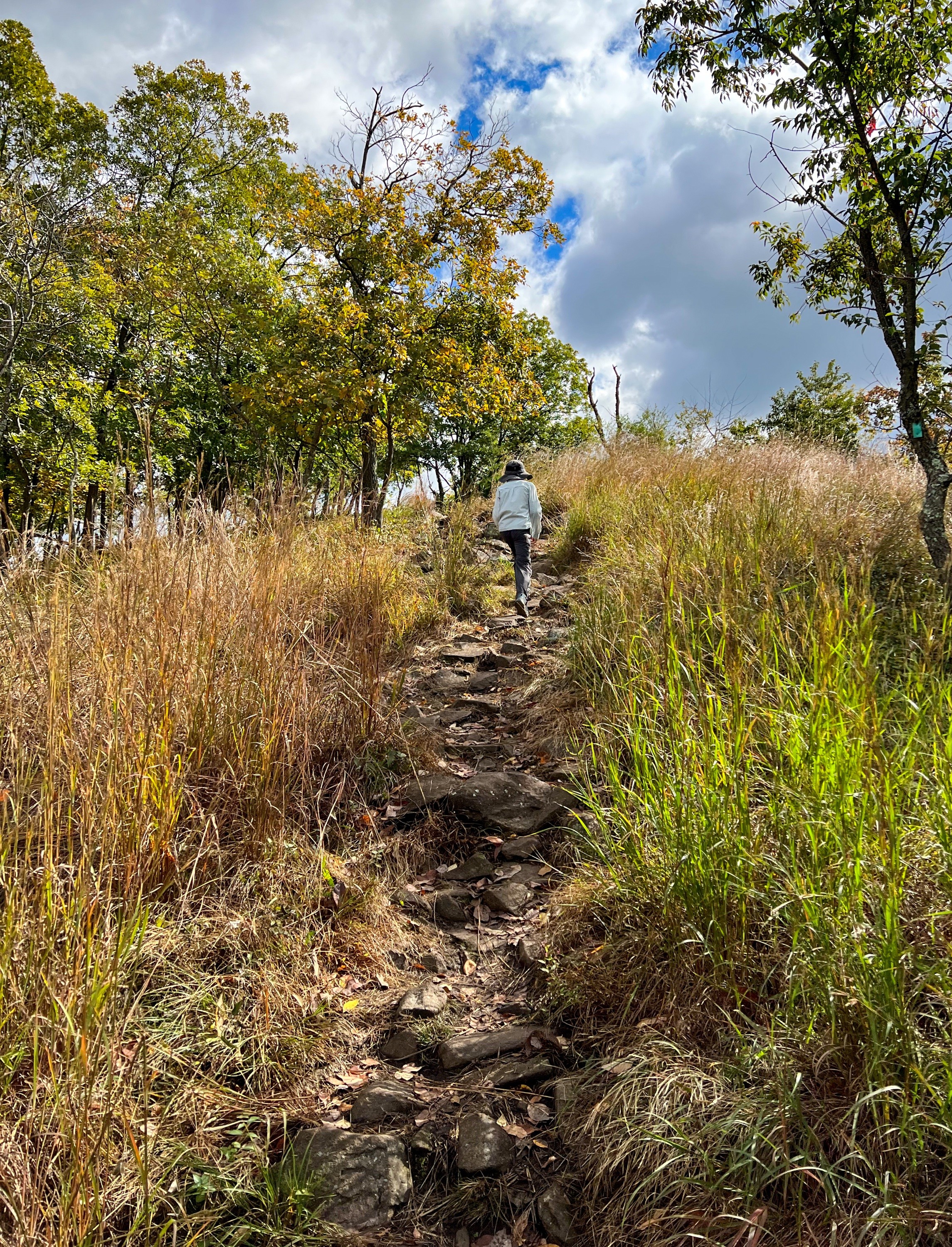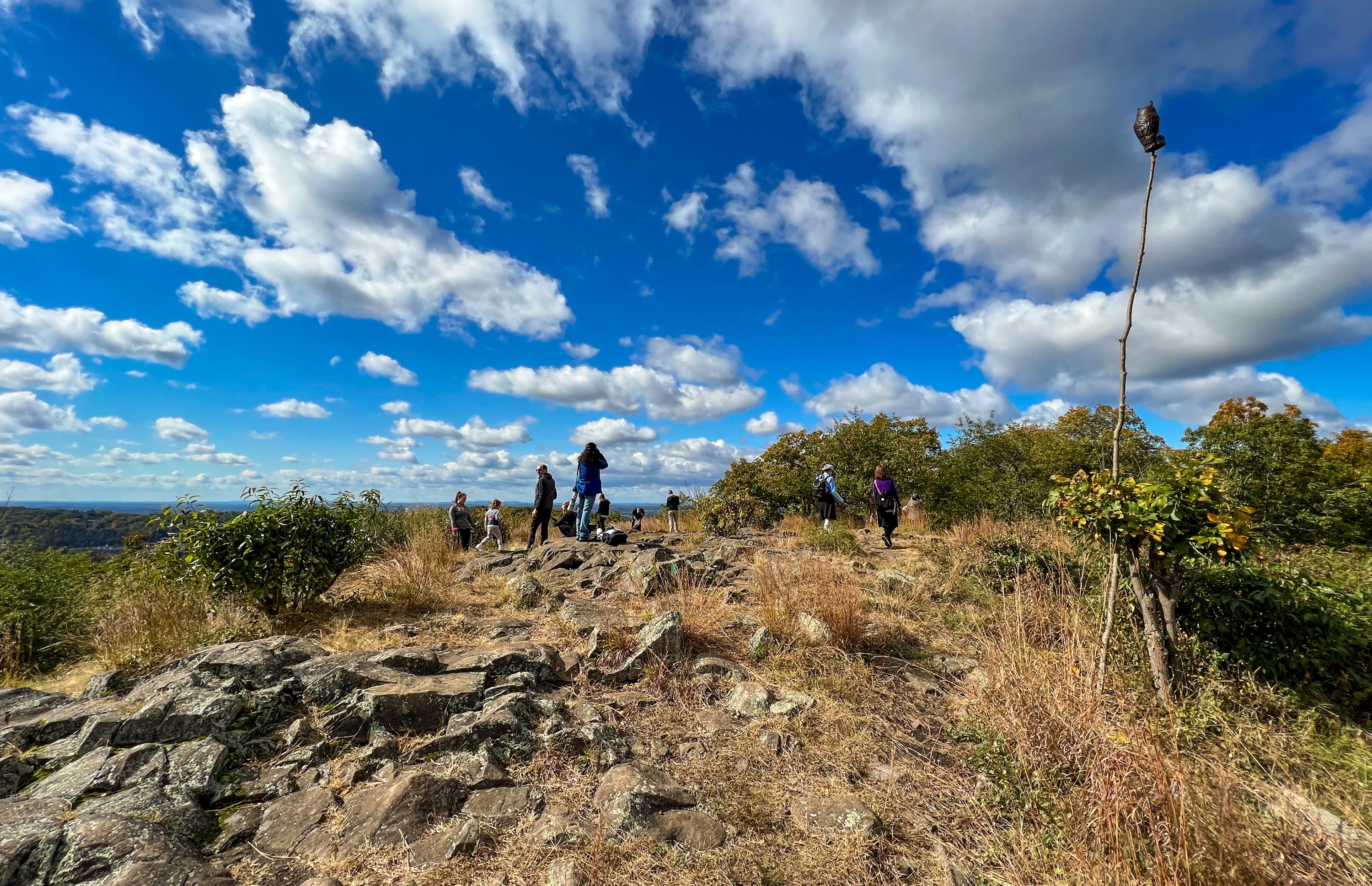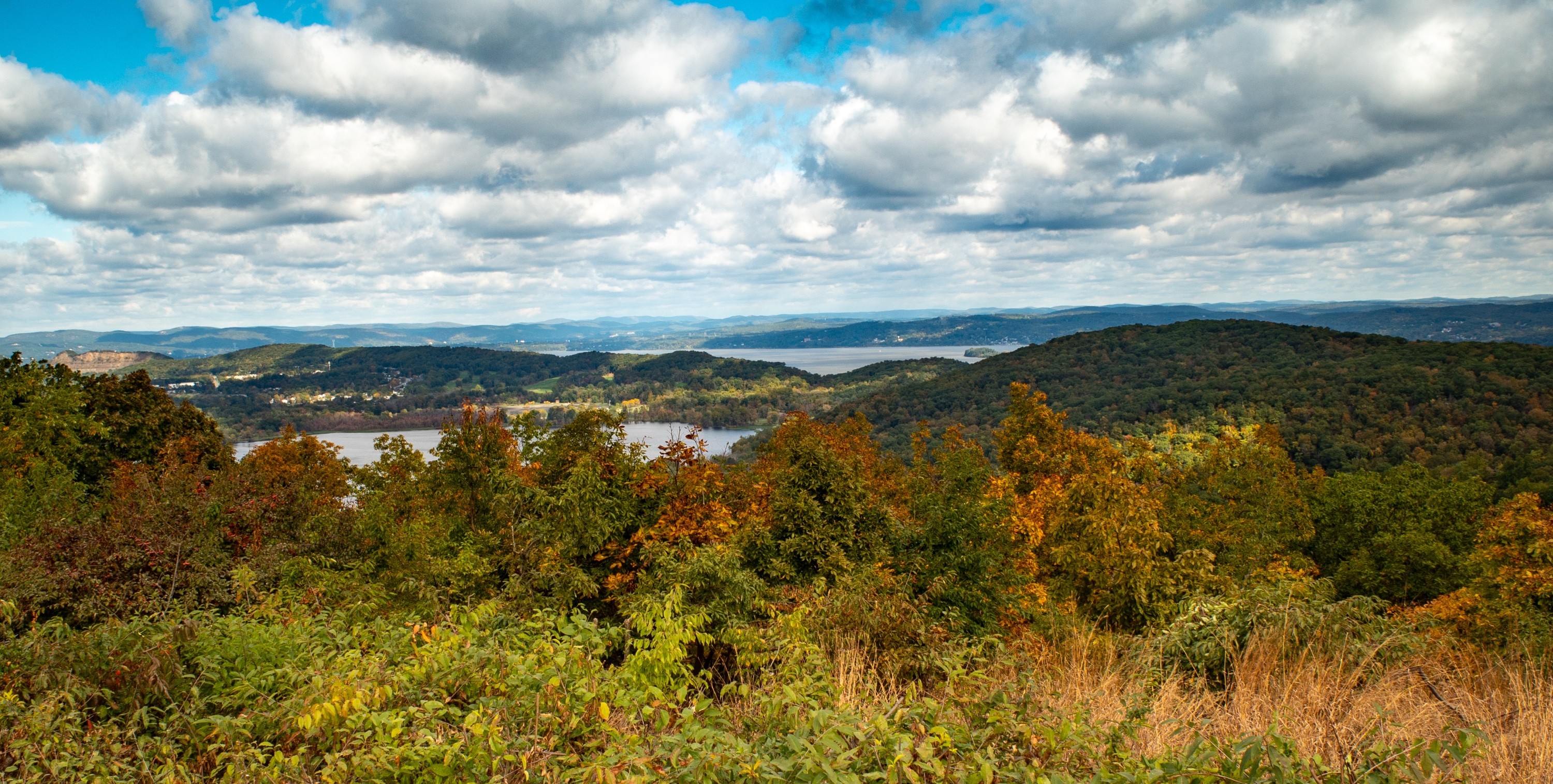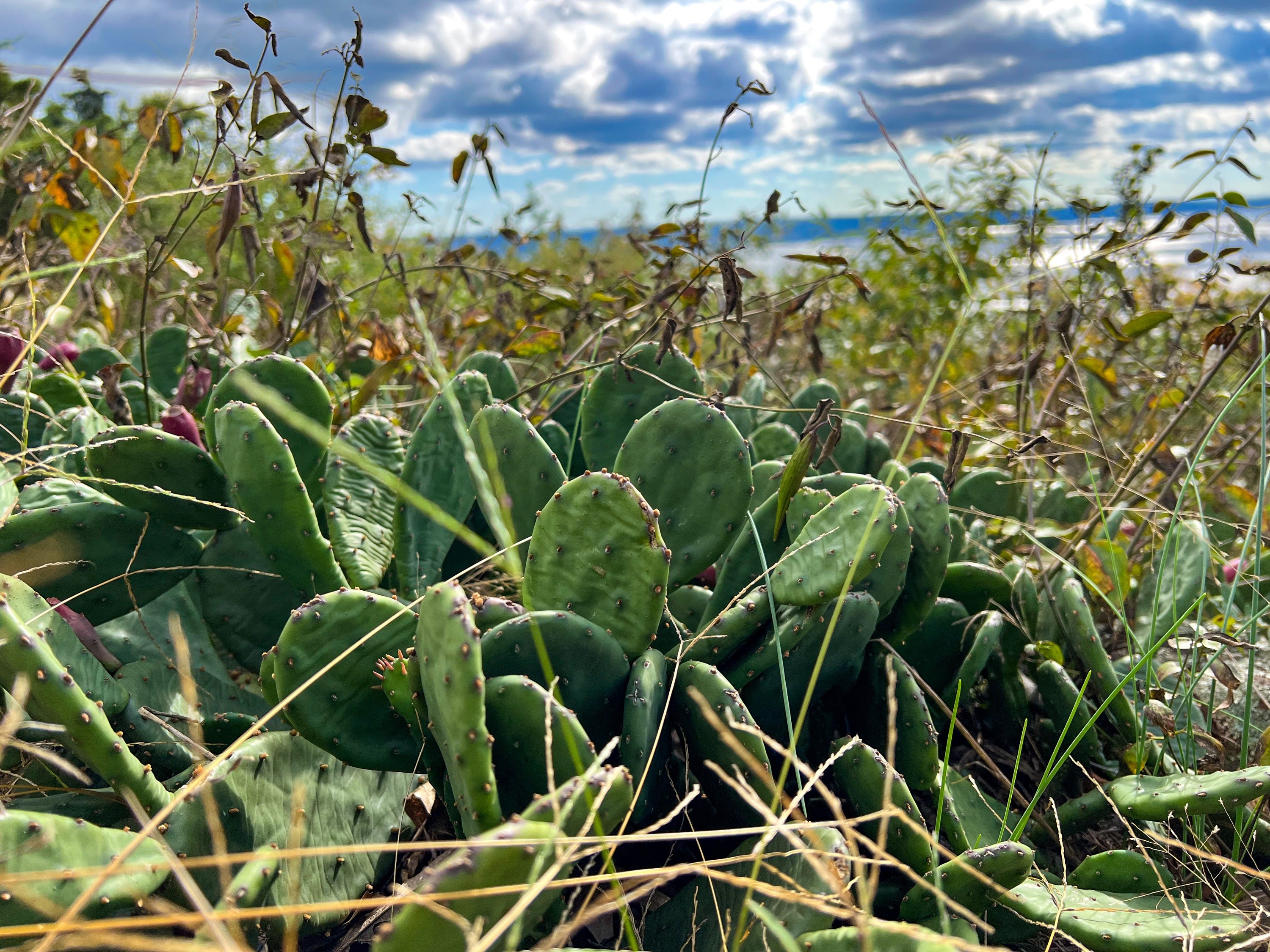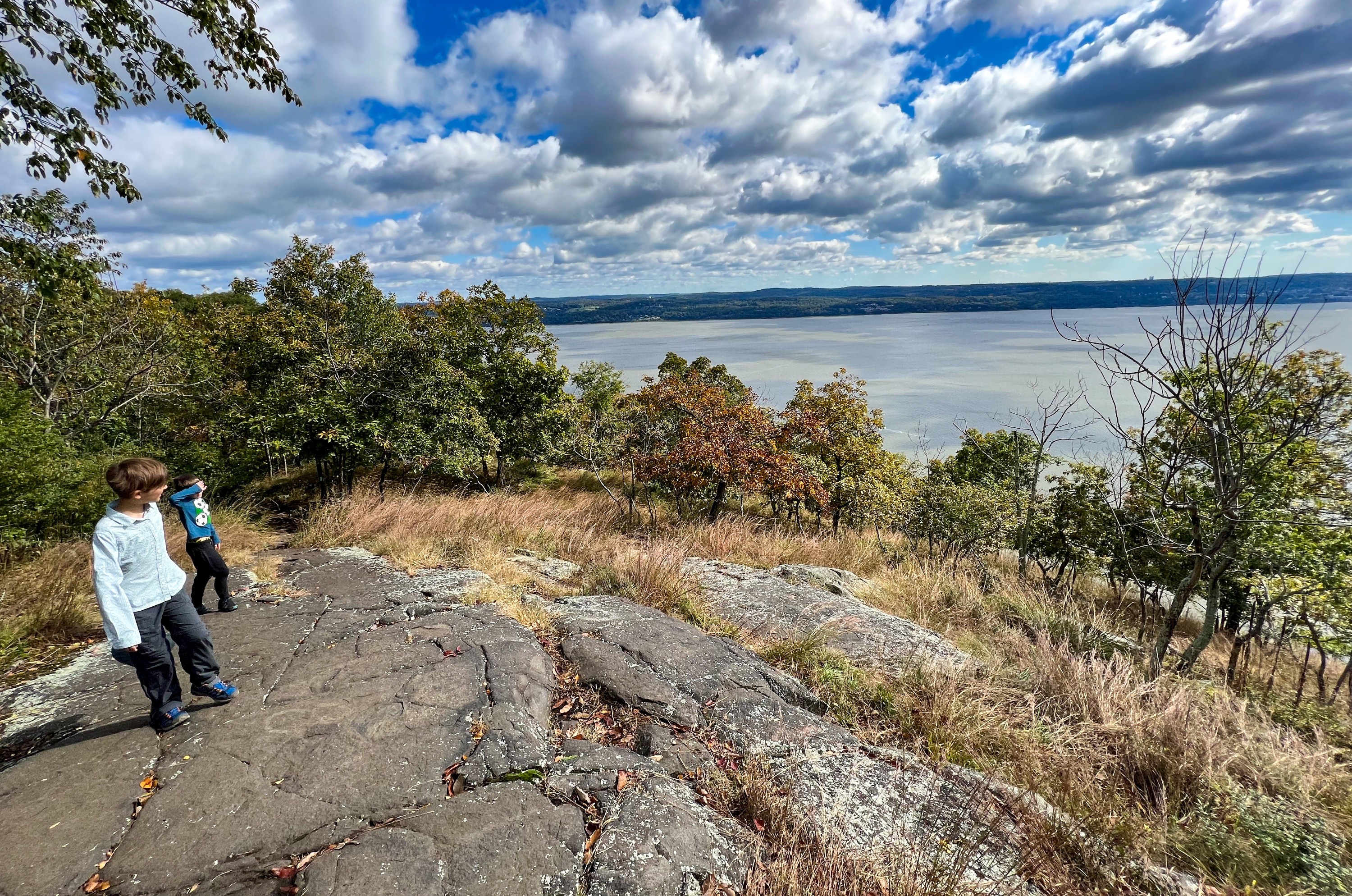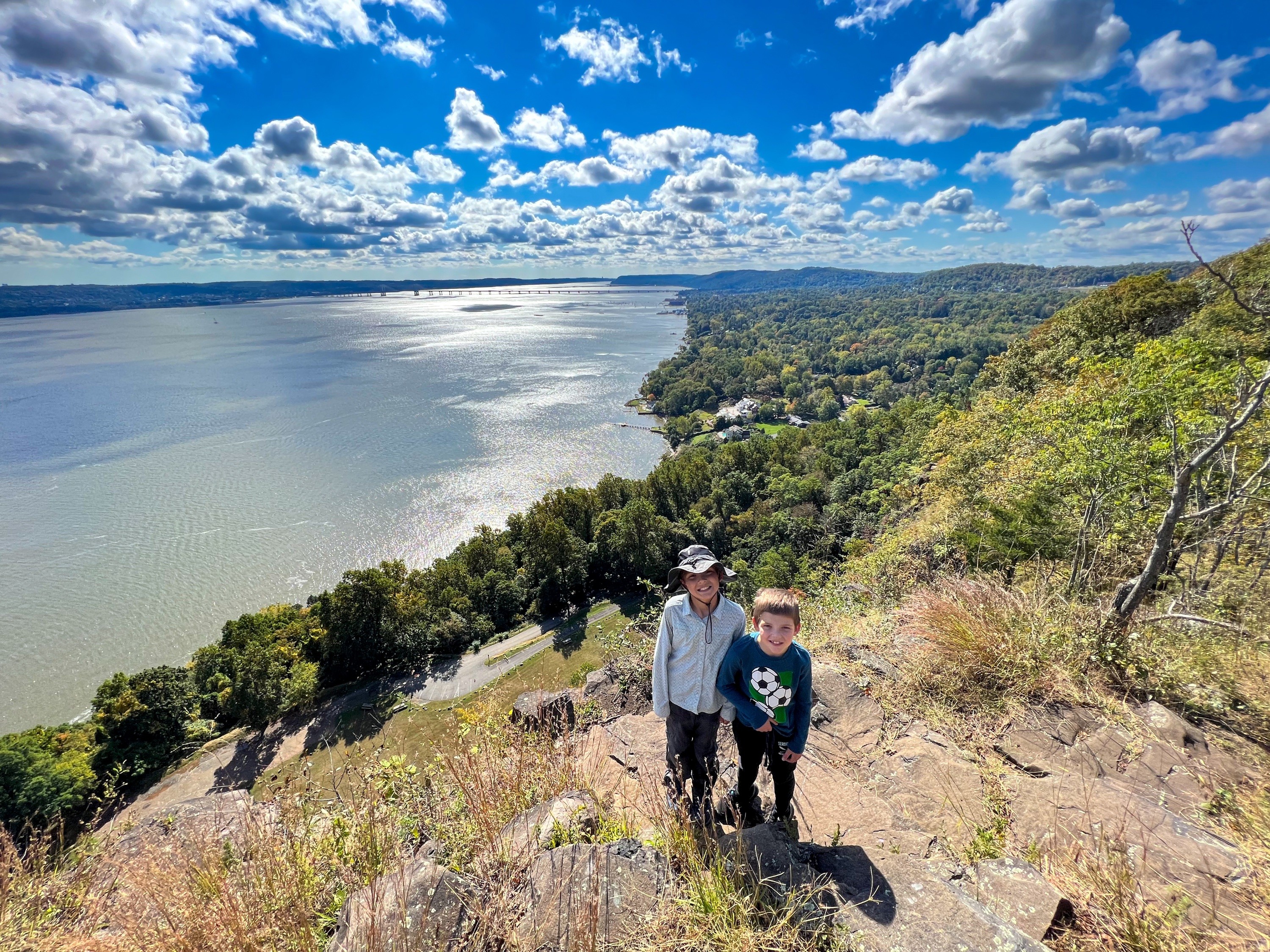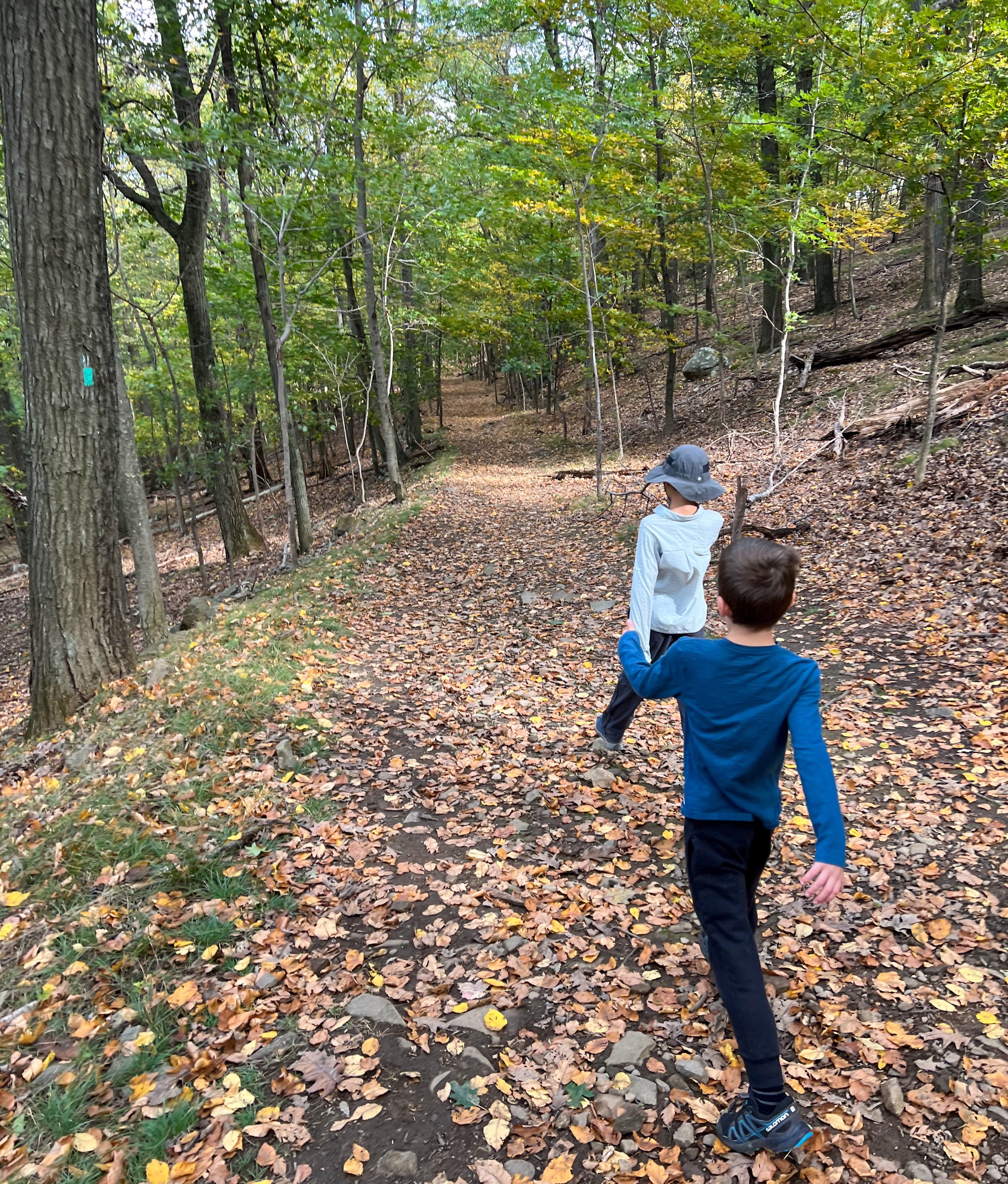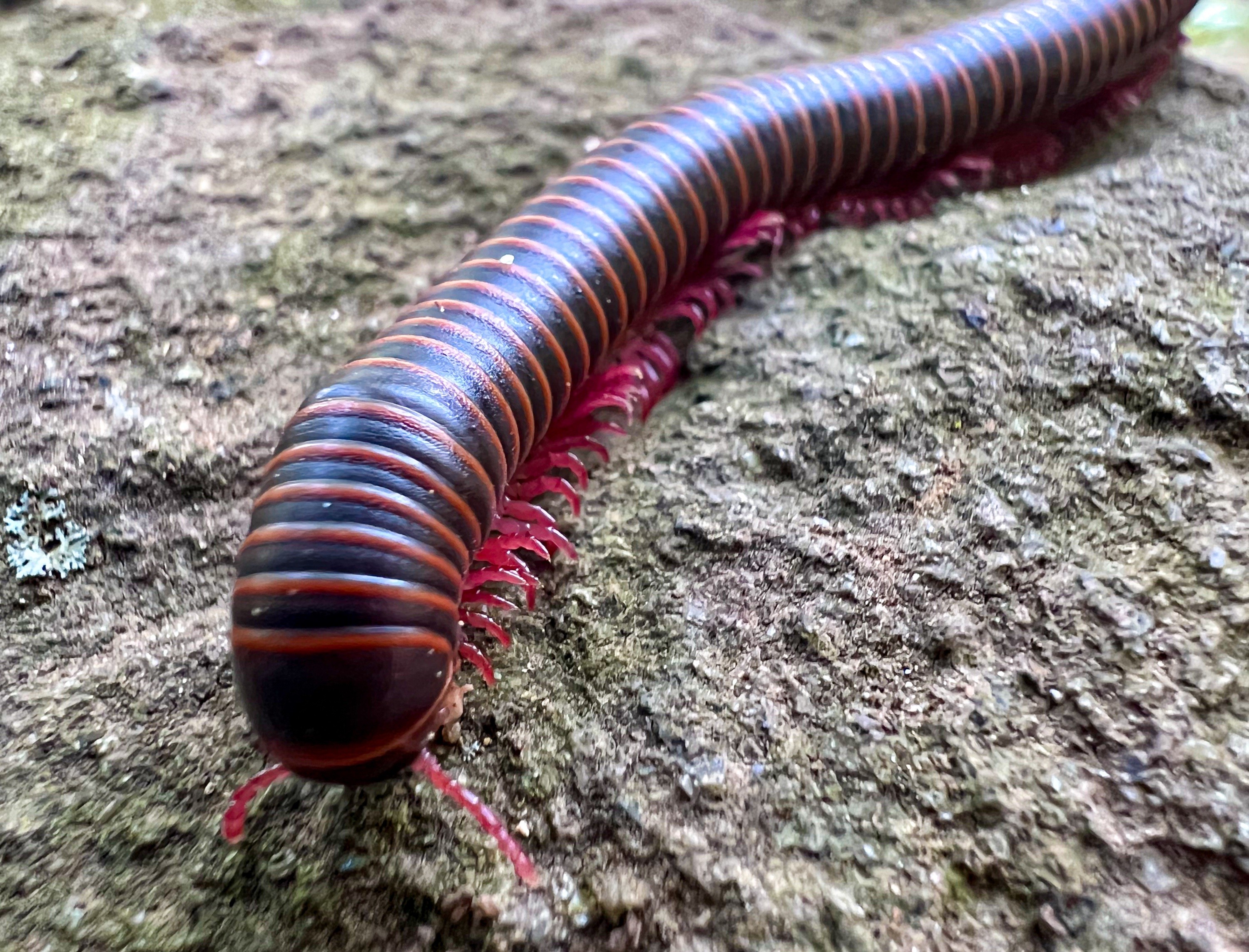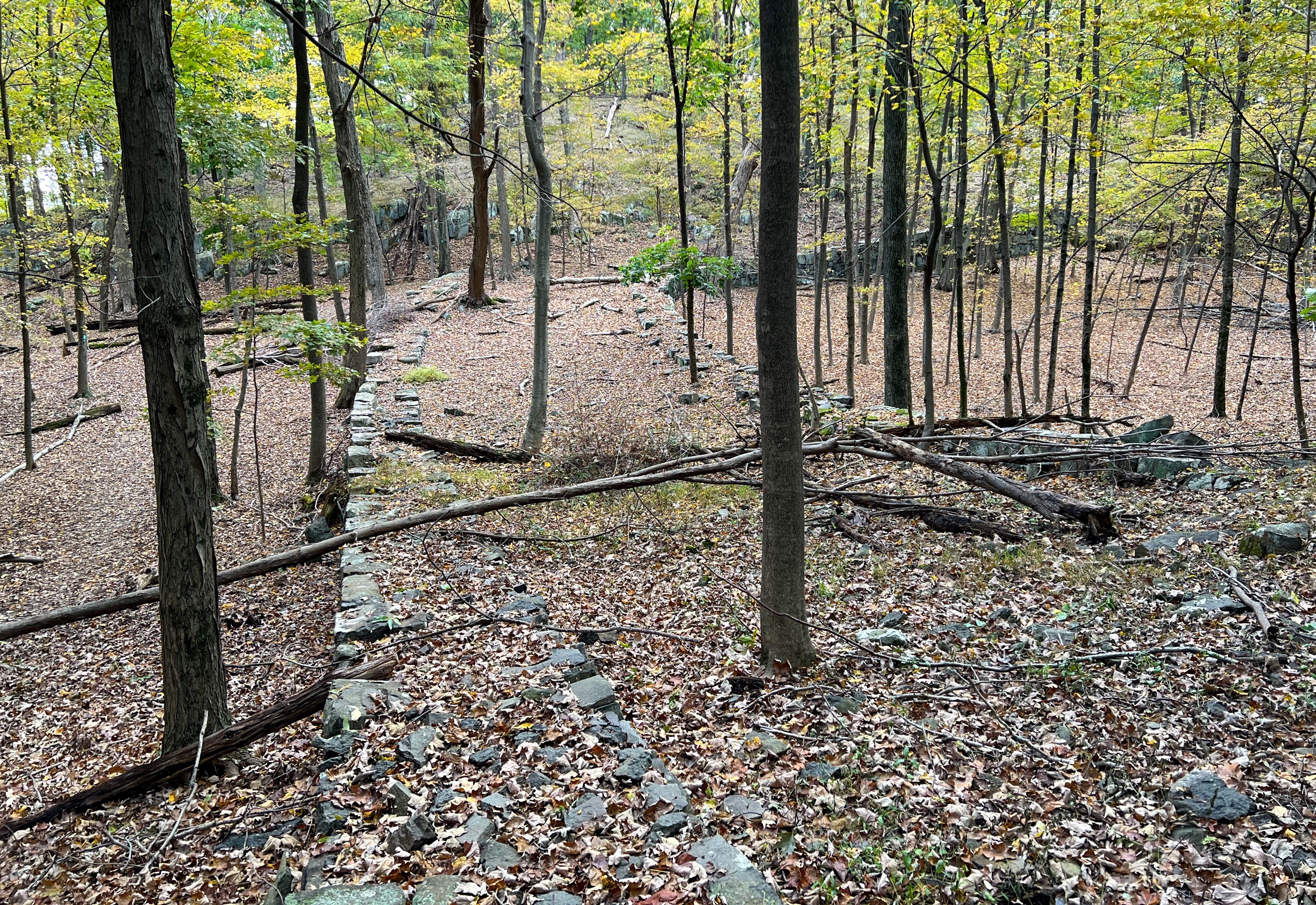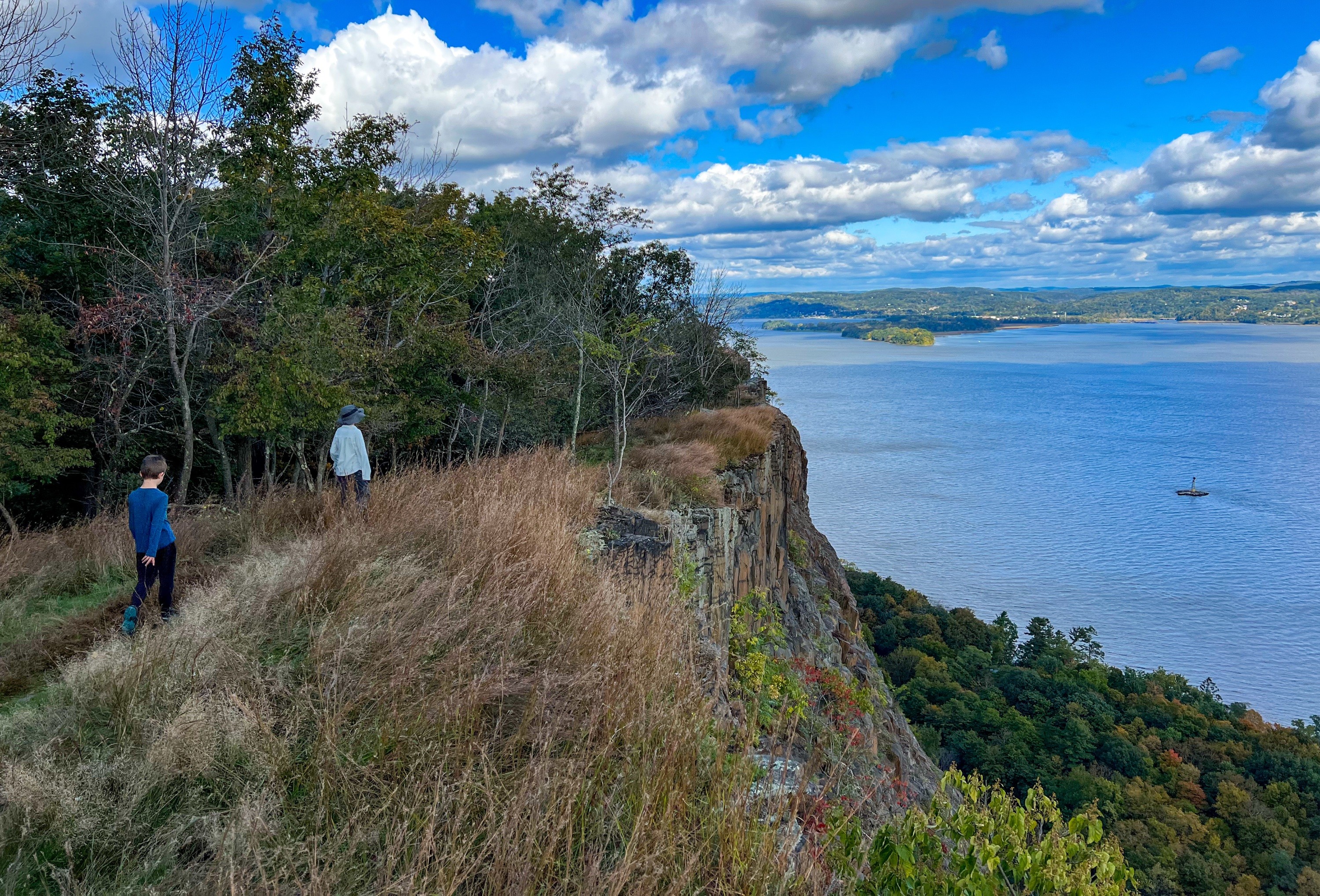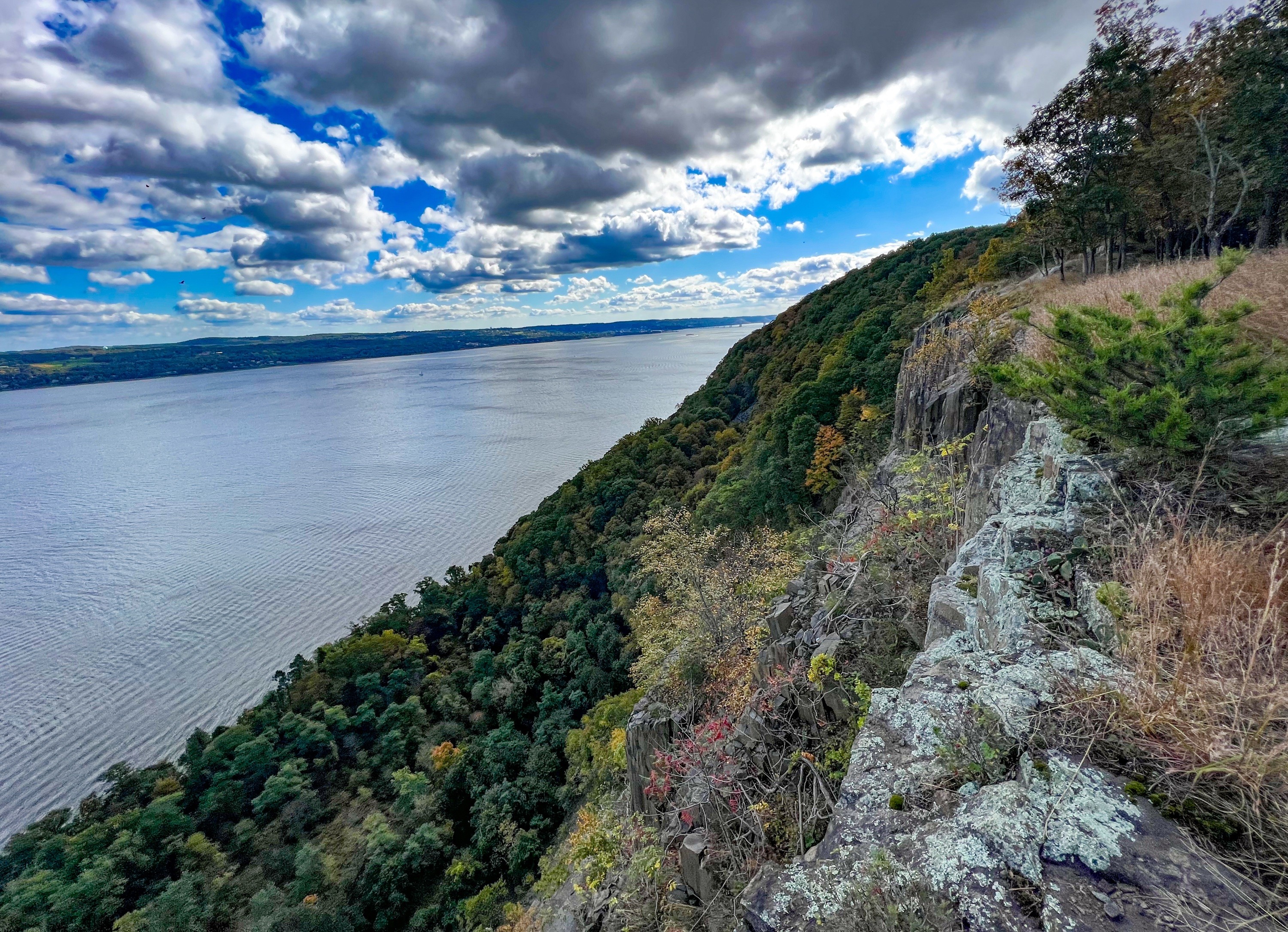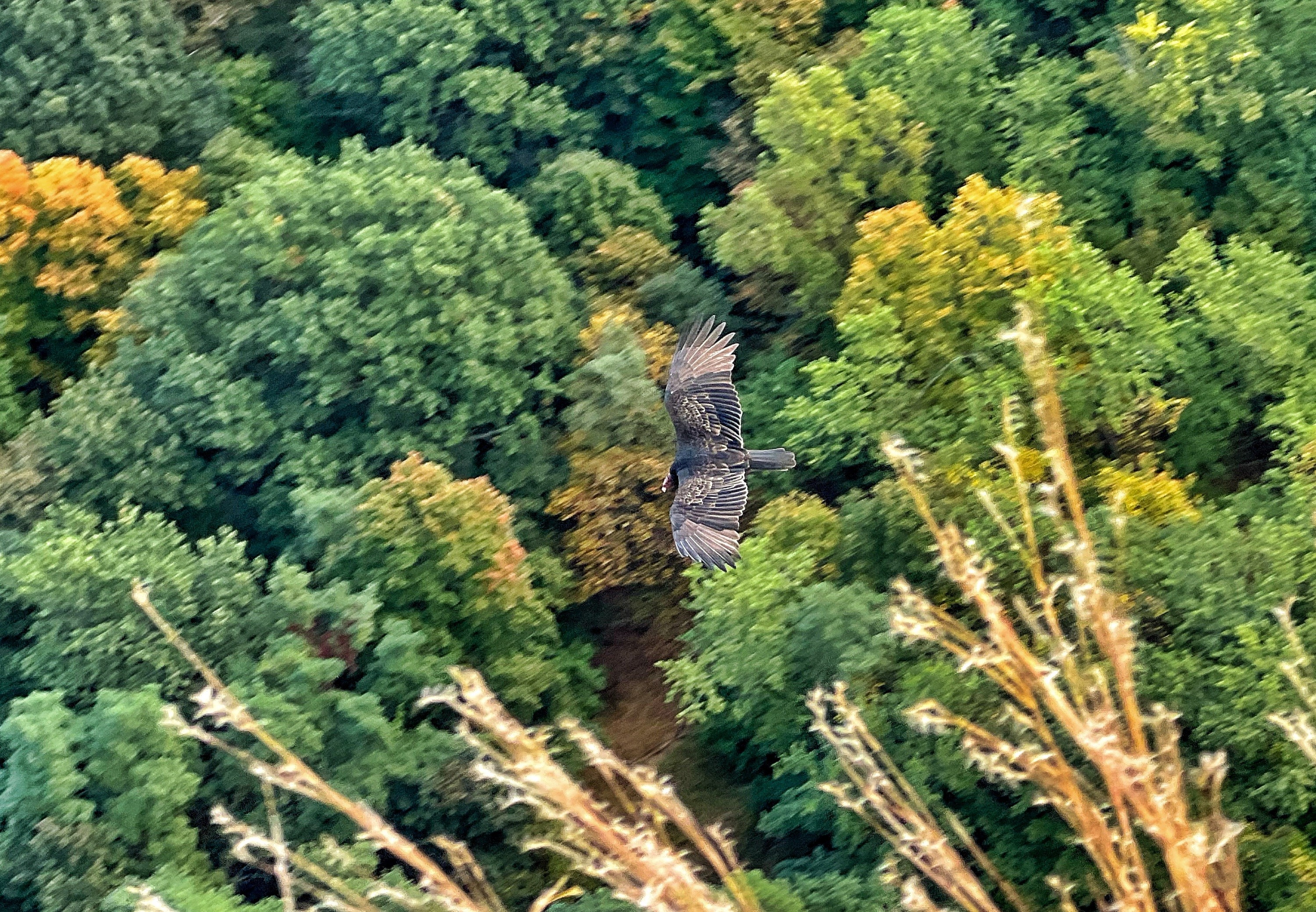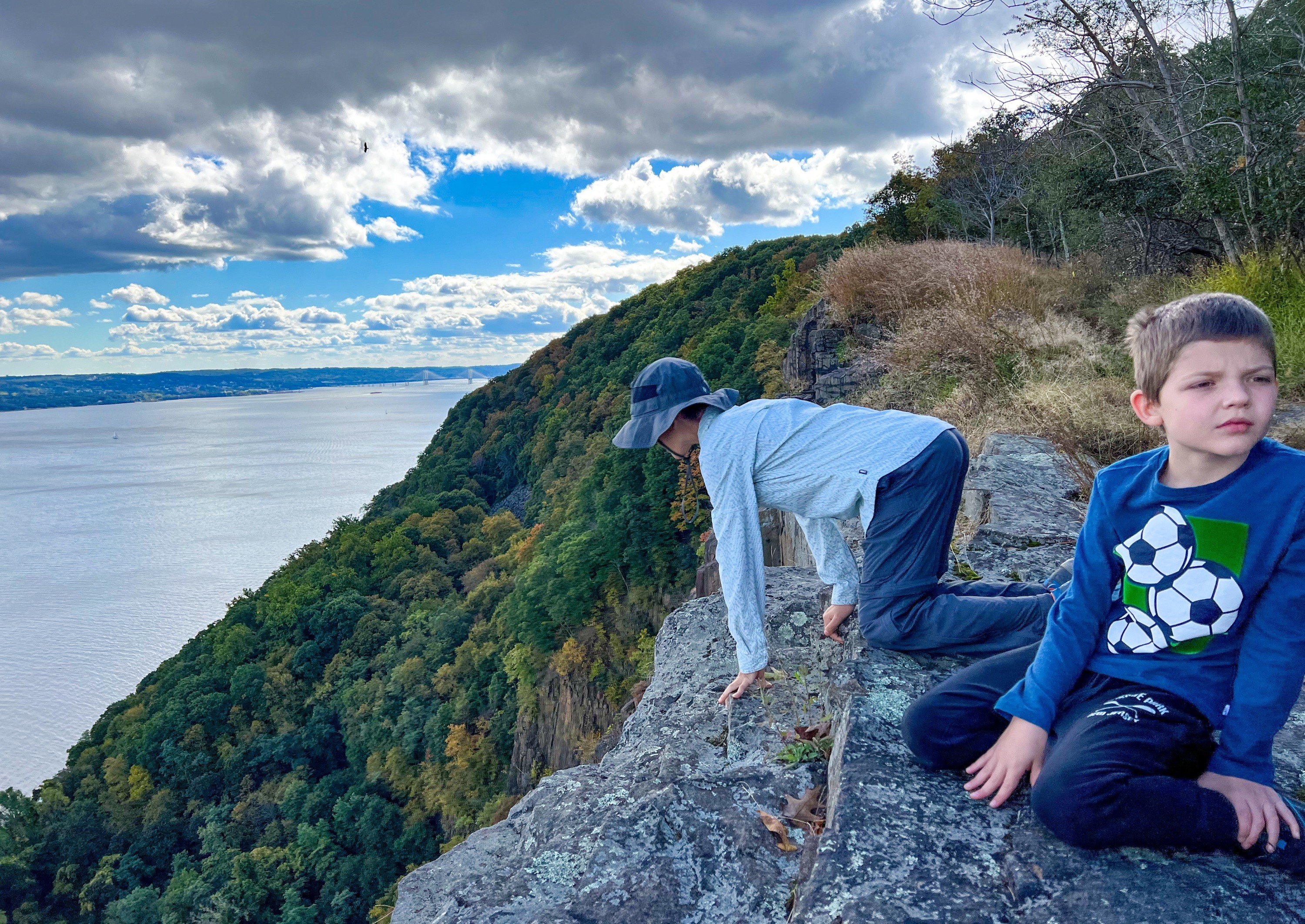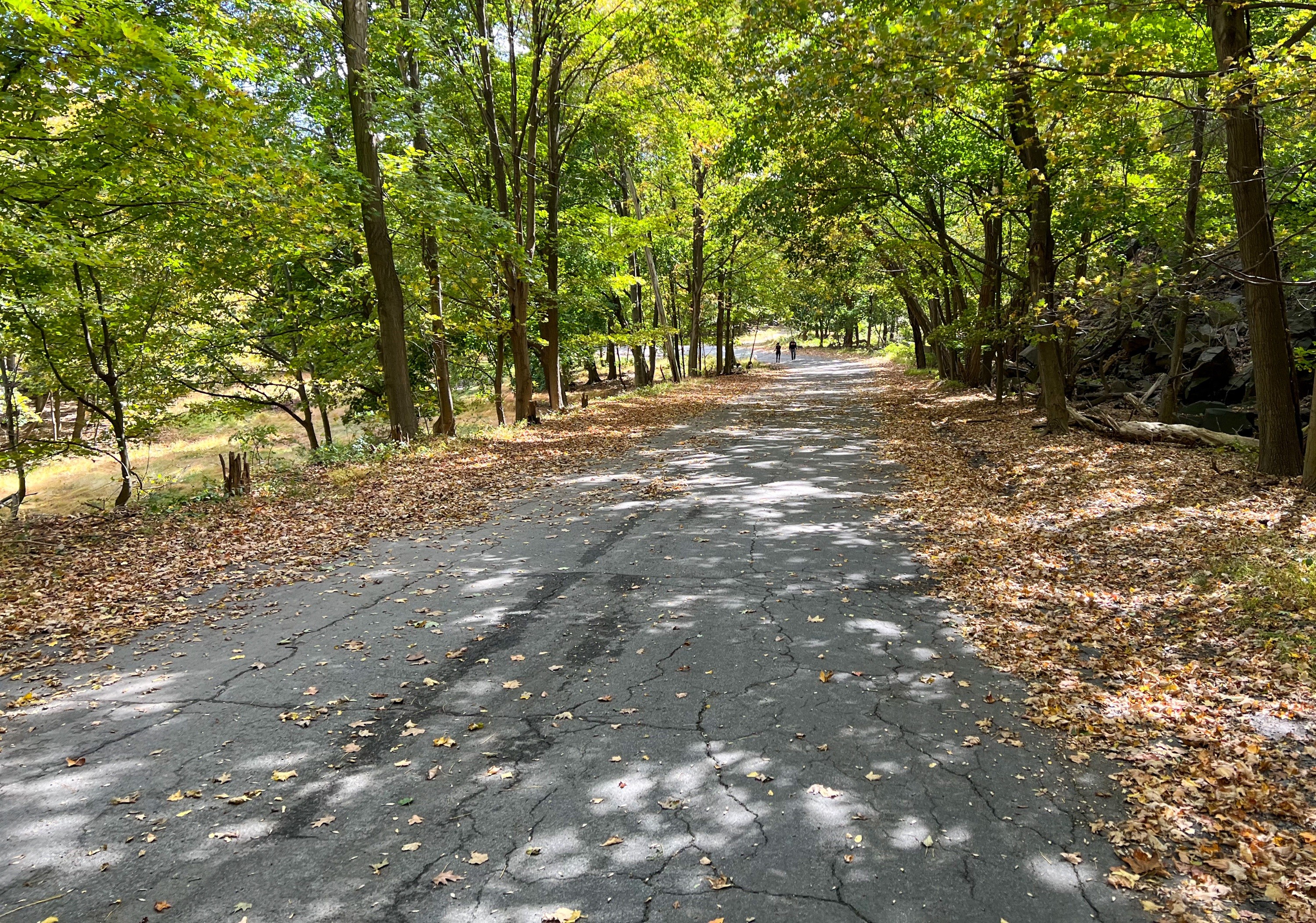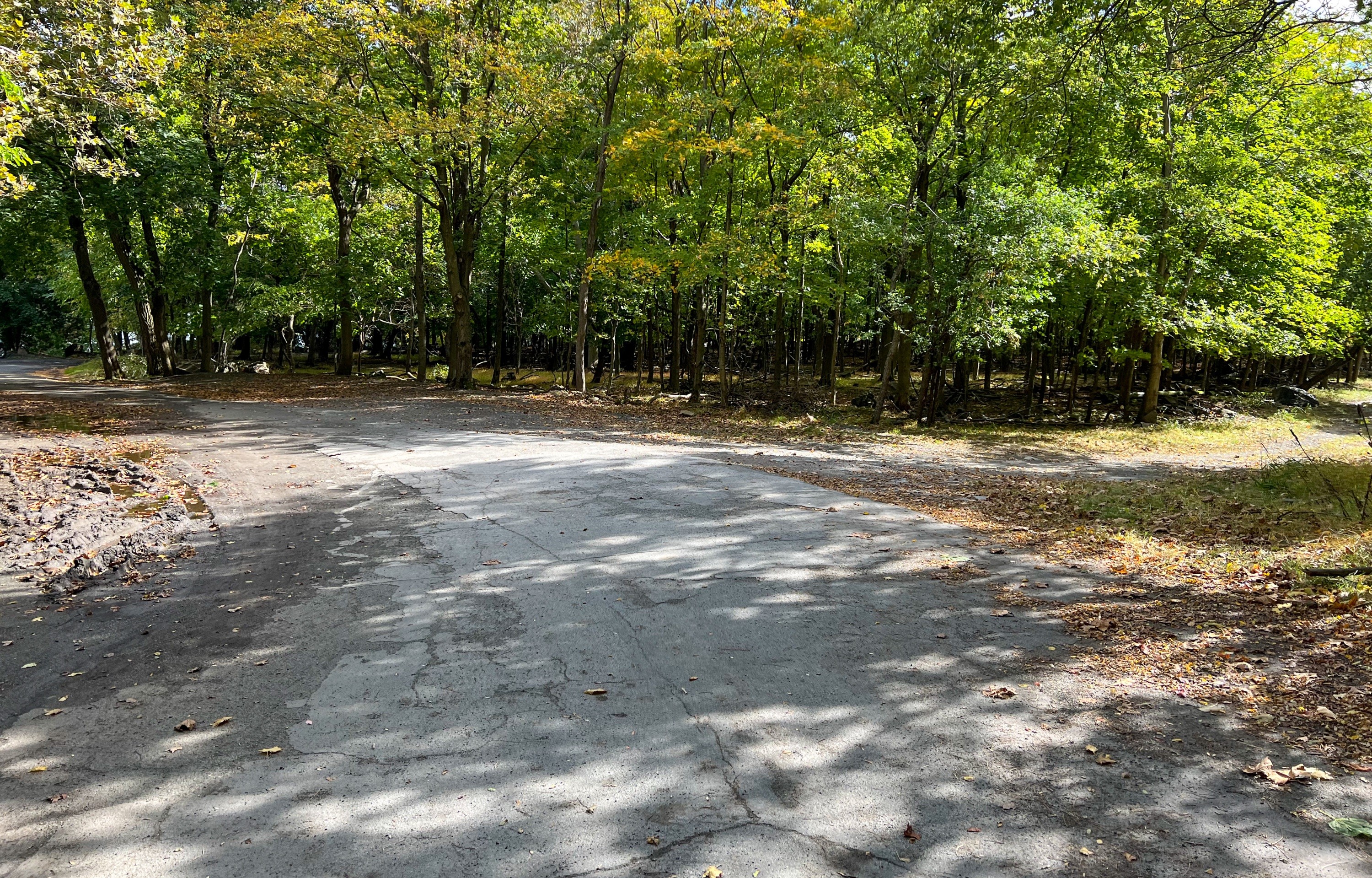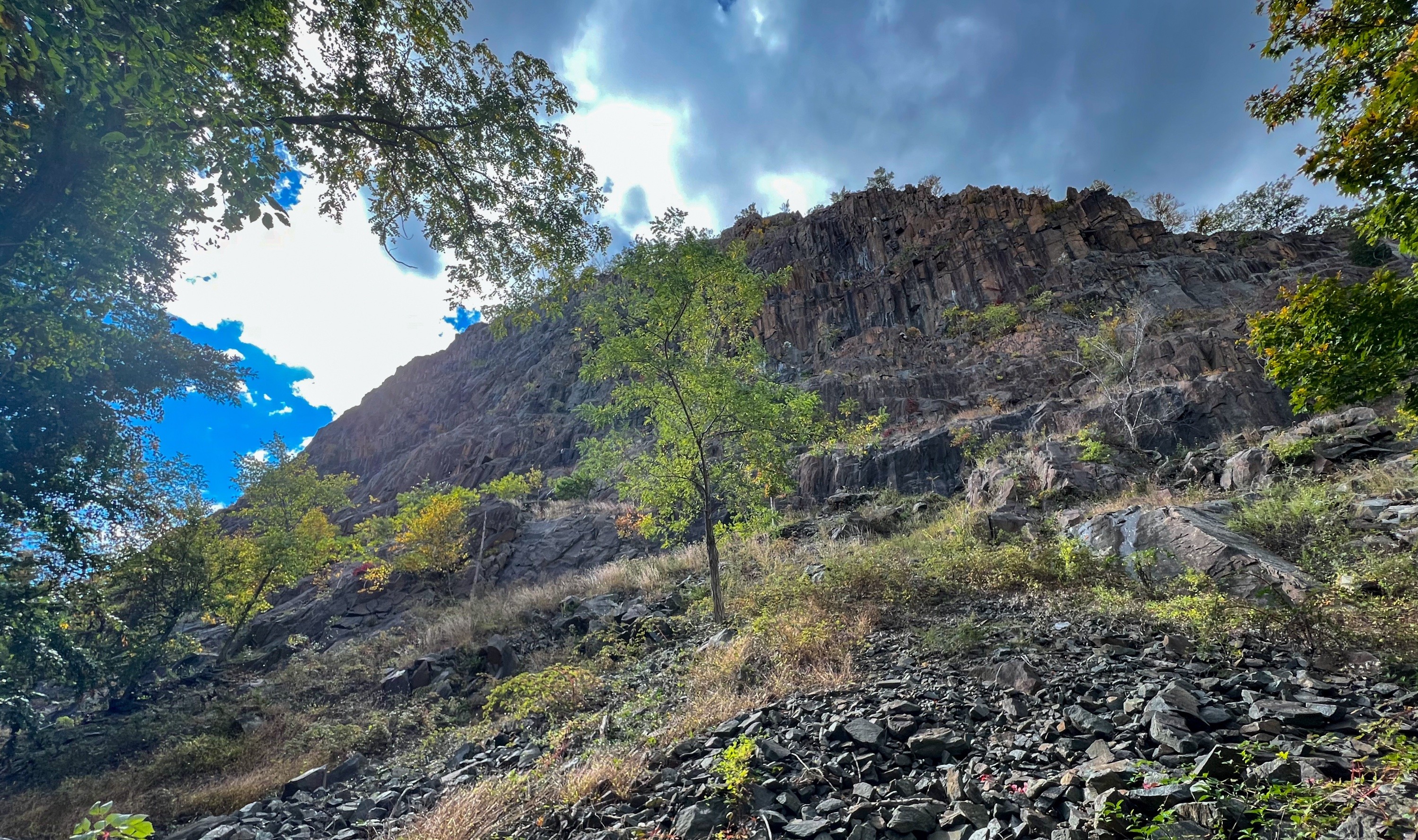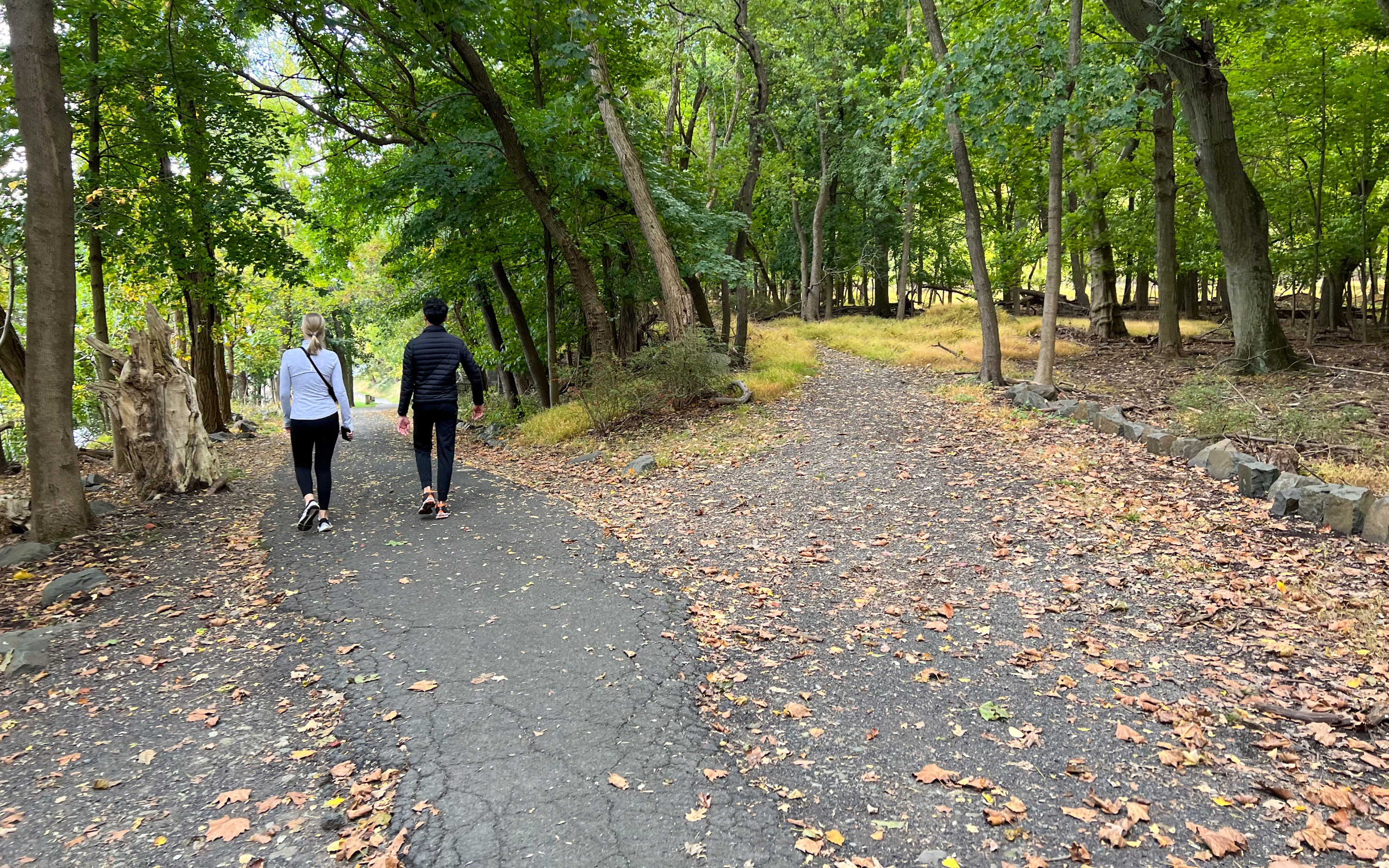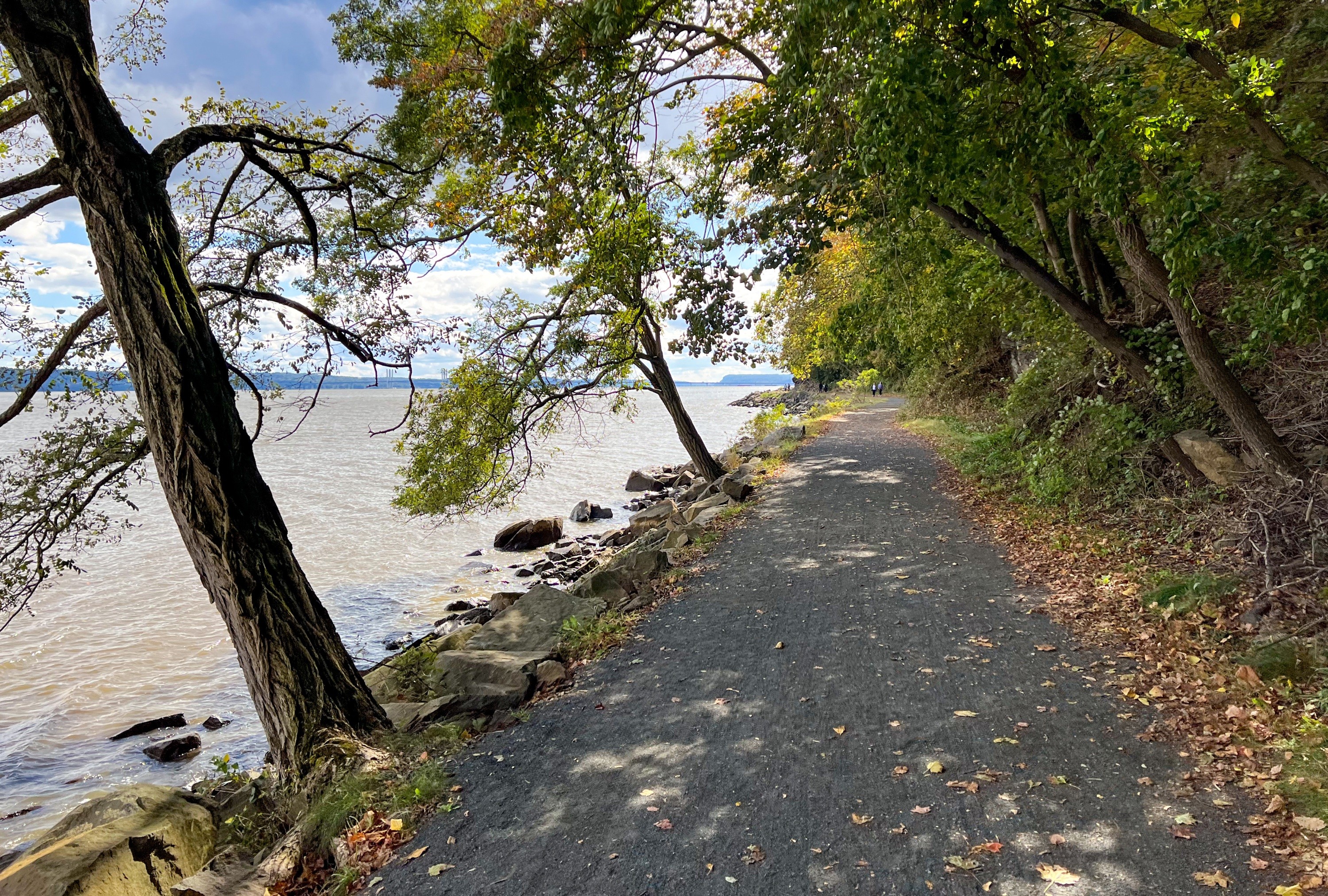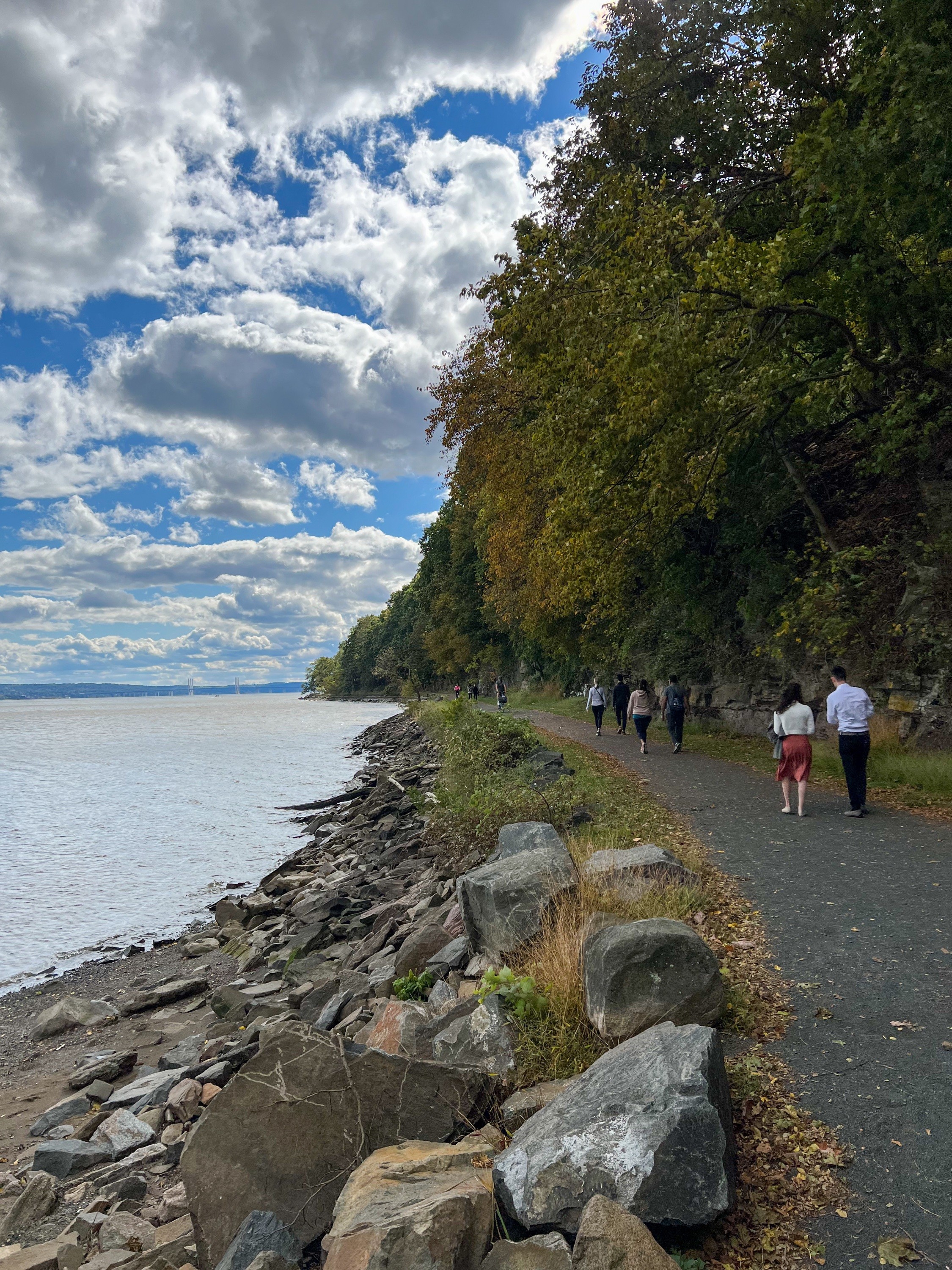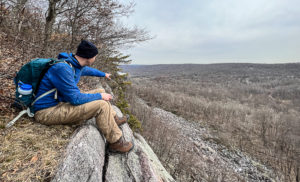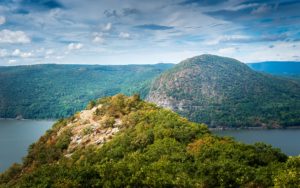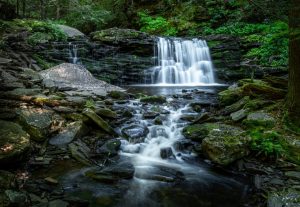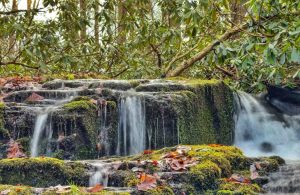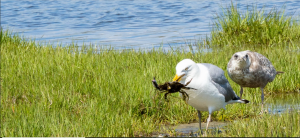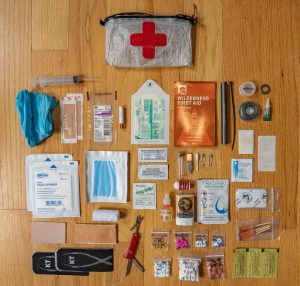Hook Mountain and Nyack Beach Hike Overview
This Hook Mountain and Nyack Beach loop uses a newly-constructed link trail to reach the Long Path which climbs Hook Mountain and offers multiple spectacular views of the Hudson River from atop the Palisade cliffs before returning along the Nyack River Trail.
Length: 5.8 miles
Elevation gain: +1,385′
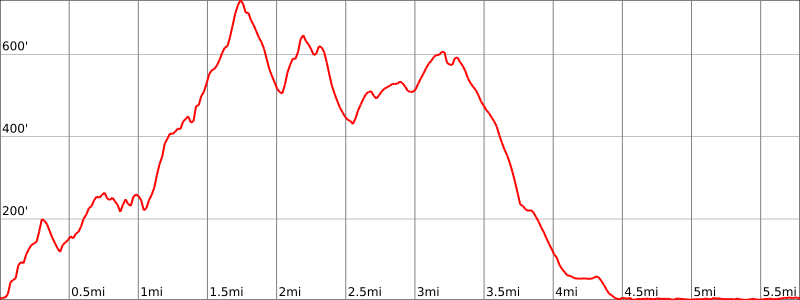
Location: Hook Mountain State Park and Nyack Beach State Park, Upper Nyack, New York
4 State Parks
The area lies within a system of four connected State Parks that cover nearly 2,000 acres of public land: Hook Mountain, Nyack Beach, Rockland Lake, Haverstraw Beach. The parks are linked by trails and function as one big park system.
About Hook Mountain
Hook Mountain is the site of a 676-acre undeveloped park stretching through almost seven miles of waterfront and cliff slopes. At 730 feet, its summit offers spectacular views of Rockland Lake and the Hudson River valley. It is also a prime location for watching various types of hawks: sharp-shinned, Cooper’s, Northern Goshawks, Red-shouldered, Broad-winged, Red-tailed. The Audubon Society estimates that an average of more than 12,000 hawks fly by Hook Mountain each Fall. – Palisades Parks Conservancy
About Nyack Beach
Nyack Beach State Park’s 61 acres along the Hudson provides access to the river and its exceptional estuary ecosystem. Access the trail to the Hook Mountain summit directly from the River Trail.
History
Pre-colonial: This land is the ancestral homeland of Lenape people, who were the principal inhabitants for centuries.
Colonization: Dutch colonists called the area “Tappan Zee” (“Tappan” after the local tribe of Lenape, and the Dutch for ‘sea’)
1800-1900s: The rock that forms the Palisades was quarried to help build New York City
1900-1911: The newly-formed Palisades Interstate Park Commission bought the land and created recreational areas for swimming, sports, and picnics along the Hudson River.
Geology
The massive wall of dark rock that towers over the plateau and trail is called the Palisades Sill.
About 200 million years ago, magma rose up and cooled between sedimentary rock layers. Over time that softer rock eroded and exposed the harder rock that you see today.
Along the river trail look for outcrops of red and grey rock. These rocks were sand and mud when dinosaurs roamed this area.
About the New Upper Nyack Trail
In the shadow of Hook Mountain, the Upper Nyack Trail has been an important connection from Nyack Beach State Park to the Long Path for many years. It is a utilitarian trail that facilitates a great 6-mile loop hike: over Hook Mountain on the Long Path into Rockland Lake State Park and returning to Nyack Beach on the River Trail…The old Upper Nyack Trail, while useful, ran through some wet, dark areas and included a road walk. Thanks to the work of Trail Conference volunteers, the experience is now even more enjoyable.
The rerouted Upper Nyack Trail, opened to the public in June [2021], was several years in the making. Its creation was made possible by the purchase of 30 acres of undeveloped land from the Marydell Faith and Life Center. Adjacent to Nyack Beach and Hook Mountain state parks, this parcel would have been coveted for residential development; its purchase by the Trust for Public Land in 2017 was a significant win for conservation in Rockland County….
Soon after the sale, work on the new trail began: A route for the trail was scouted, mapped, and proposed for approval by the leadership of the Long Distance Trails Crew to the Palisades Interstate Park Commission, who assumed management of the land once it was incorporated into Hook Mountain State Park. The approval took into consideration the access and safety of the route while ensuring no ecological or archeological resources would be affected.
The construction of the trail, along and through a steep talus slope of boulders eroded from Hook Mountain, was taken on by the skilled and dedicated volunteers of the Long Distance Trails Crew…Construction began in 2019. Though less than a mile in length, the technical work required to build a safe, sustainable route through such challenging conditions took almost 2 years to complete. The crew, which generally works Friday, Saturday, and Sunday every other week from early spring to early winter, put in 7,341 volunteer hours (and hundreds of gallons of sweat, as well as a little blood) into the project….
To create this trail, large boulders (up to 1,000 pounds each) had to be moved, manually, using rock bars and a high line. These boulders were moved into low spots and drainage channels to form stepping stones. In other places, rocks were placed along the route to level it, then smaller rocks were wedged into gaps around it. Then crush—literally gravel-sized rocks manually crushed by crew members from larger rocks—was used to fill in the smaller gaps. The footbed was then finished by covering the rocks and crush with dirt that was dug up nearby and carried in buckets to the trail.
NY-NJ Trail Conference Trail Walker, Fall 2021
Hook Mountain & Nyack Beach Parking
Park at the Nyack Beach State Park parking area. Address: 698 N Broadway, Nyack, NY 10960. There is an $8/vehicle entry fee.

Hook Mountain Map
- Hudson Palisades Trails Map #110 – NY-NJ Trail Conference
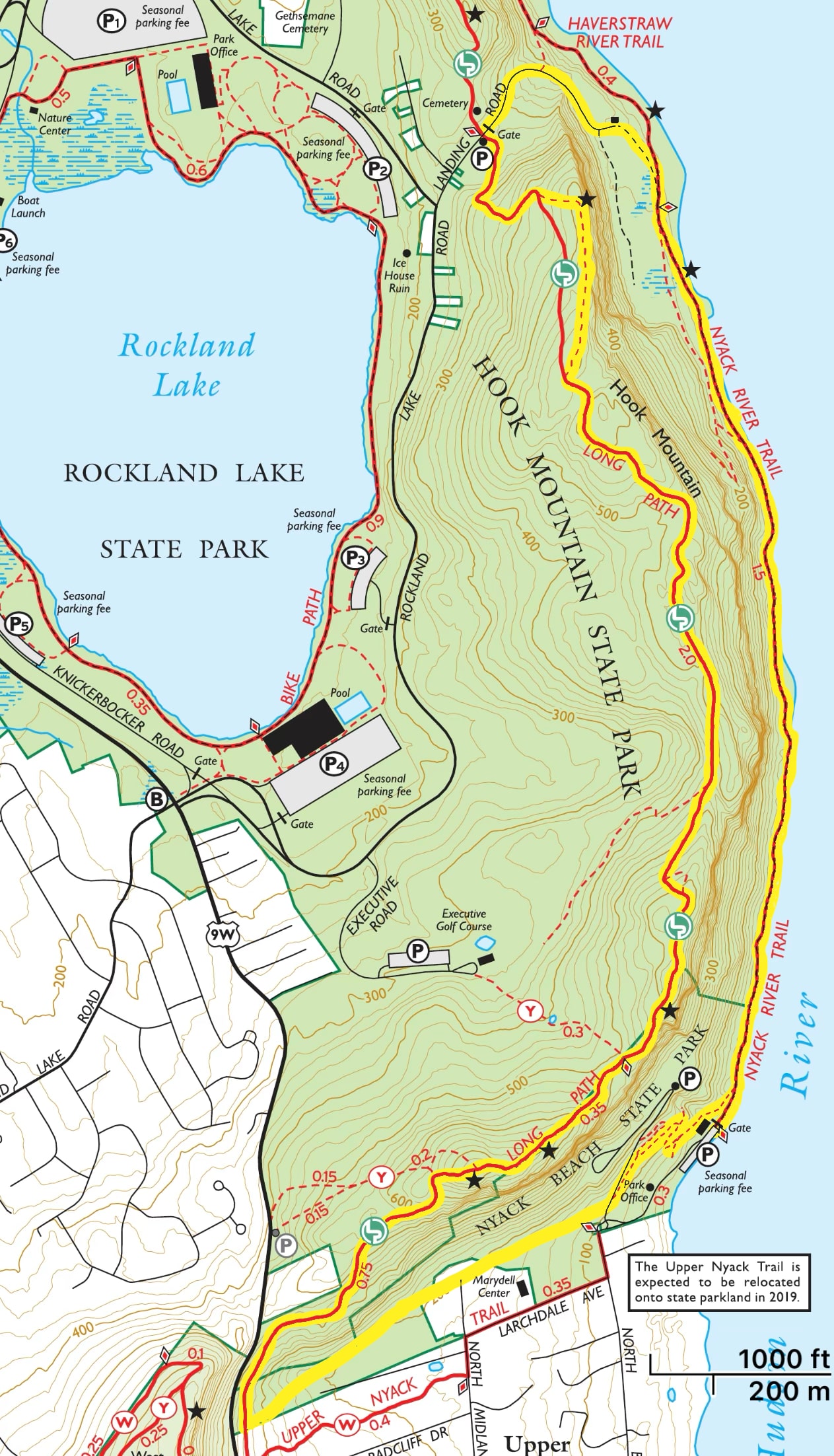
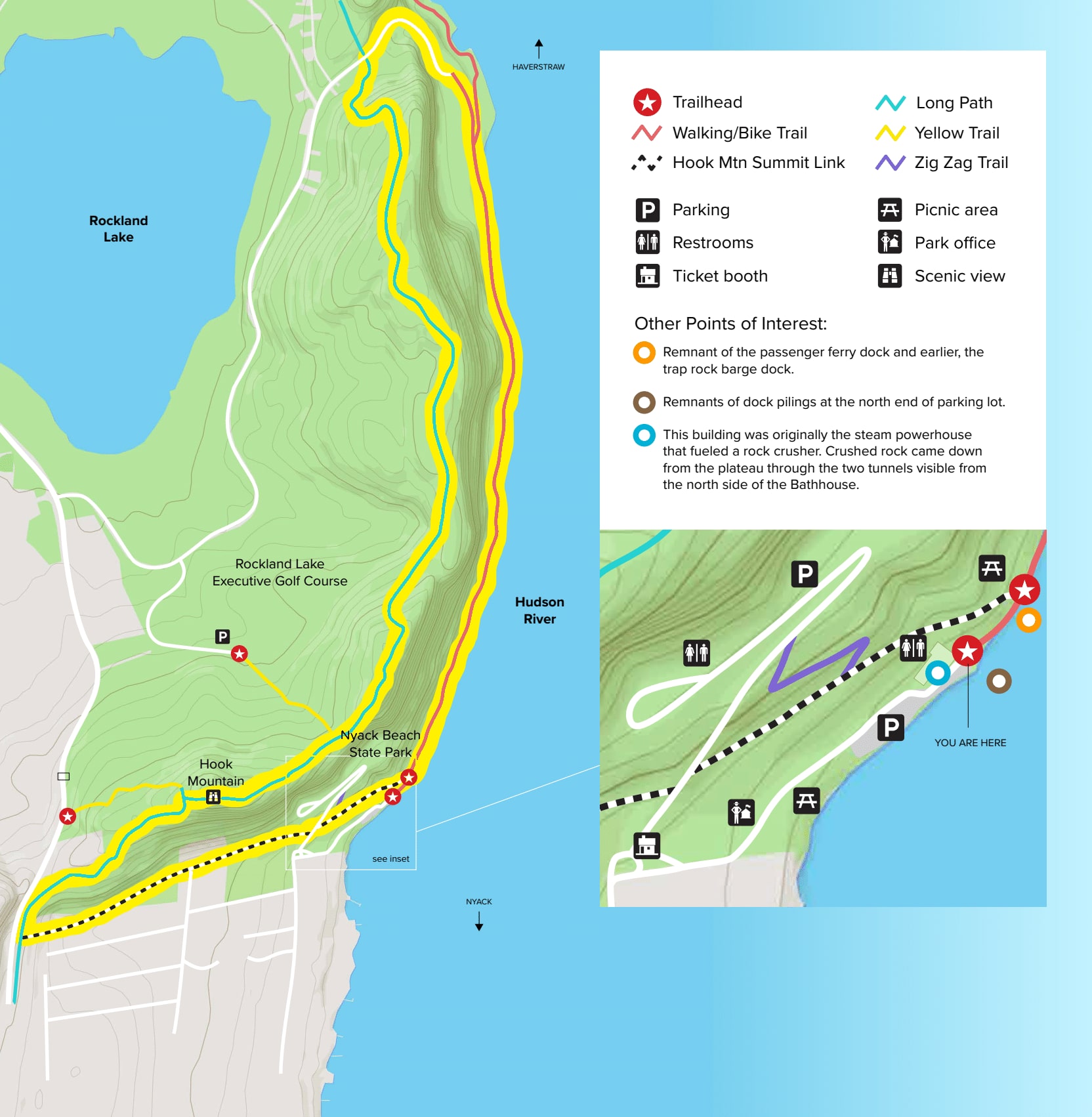
Hook Mountain and Nyack Beach Hike description
From the parking area head north, past the restrooms and vending machine on your left.
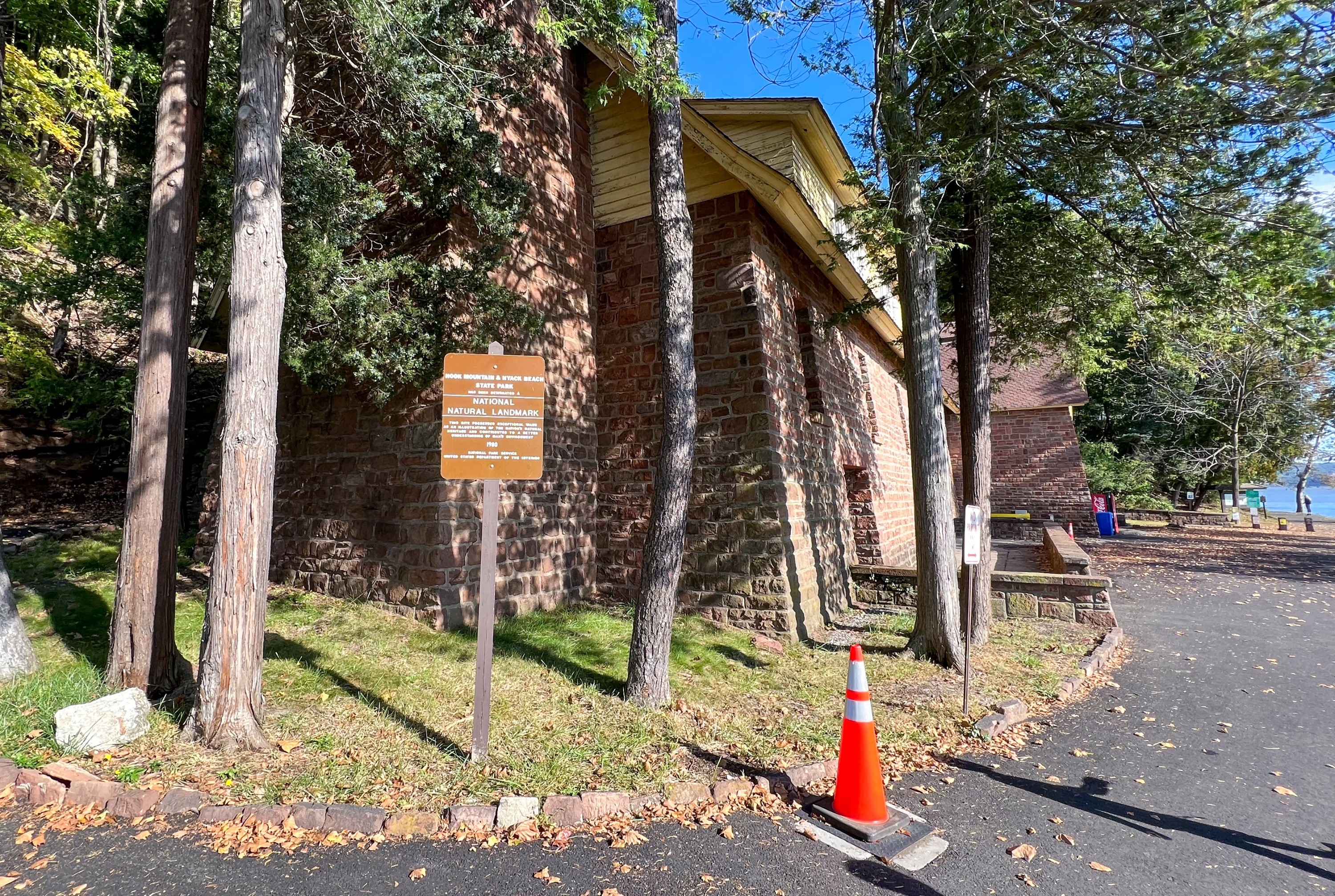
Pass a kiosk and then follow the walking/bike trail a short distance north.
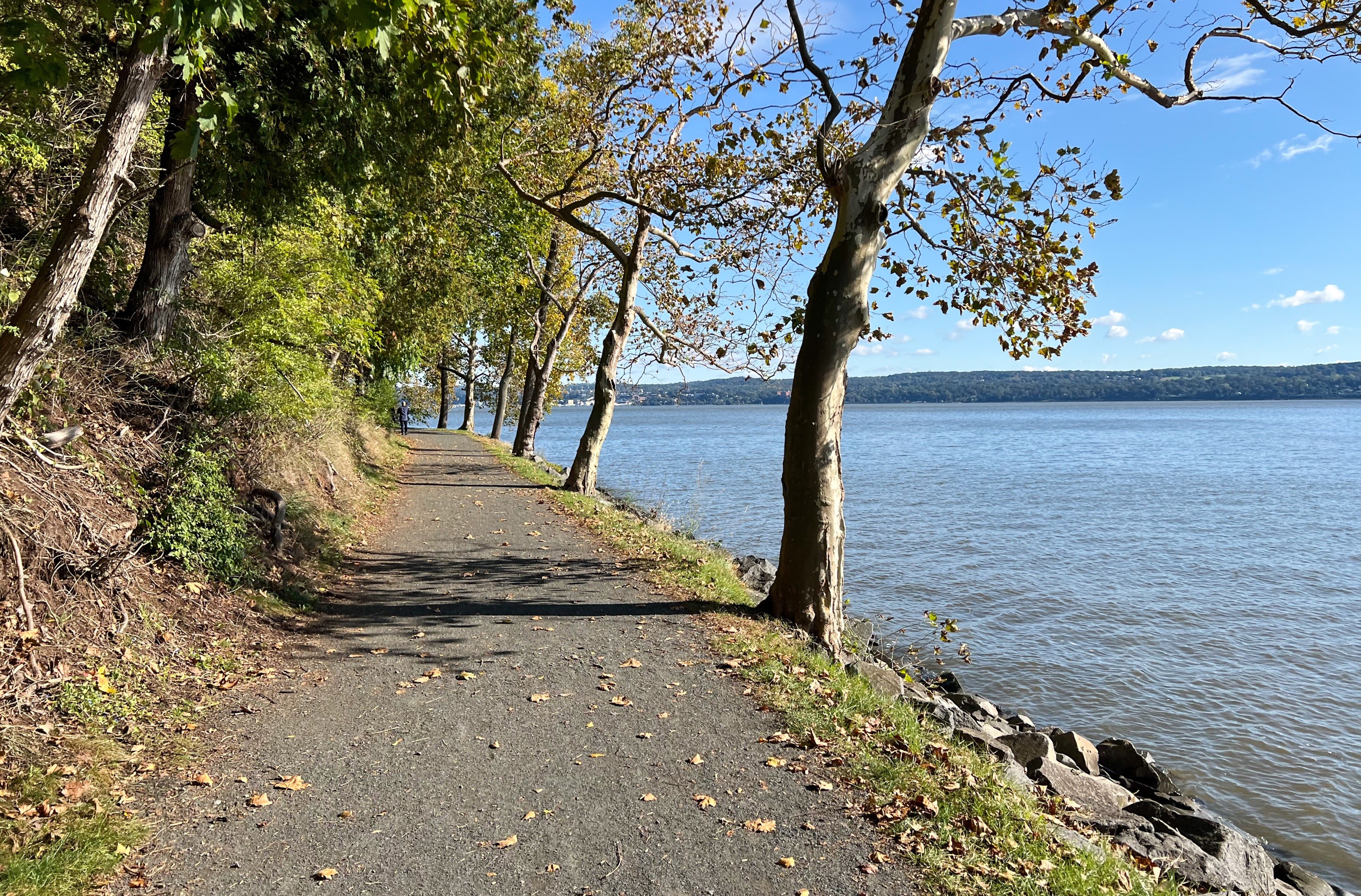
On your left, look for a green sign pointing towards “Hook Mt Summit & Plateau.” A tree with three white blazes marks the start of the new Upper Nyack Trail.
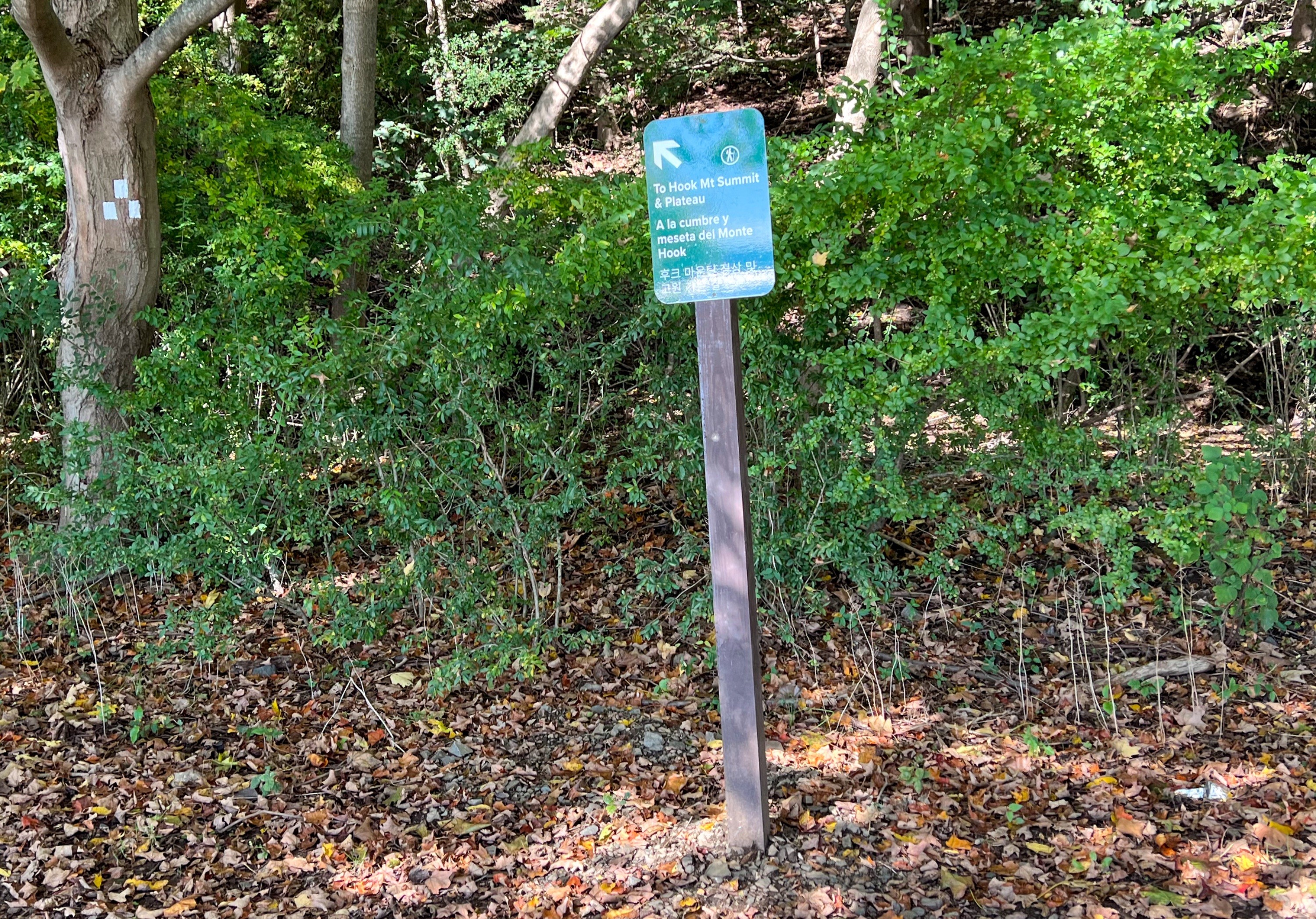
Follow this trail as it heads uphill.

You’ll reach a sign at a junction pointing towards the Hook Mountain Summit and the Plateau. Head left towards the Hook Mountain Summit.

Continue a bit further and you’ll reach a paved road. Walk downhill along the road a short distance and look for the entrance to the trail on your right. When we visited, it was marked with an orange cone.
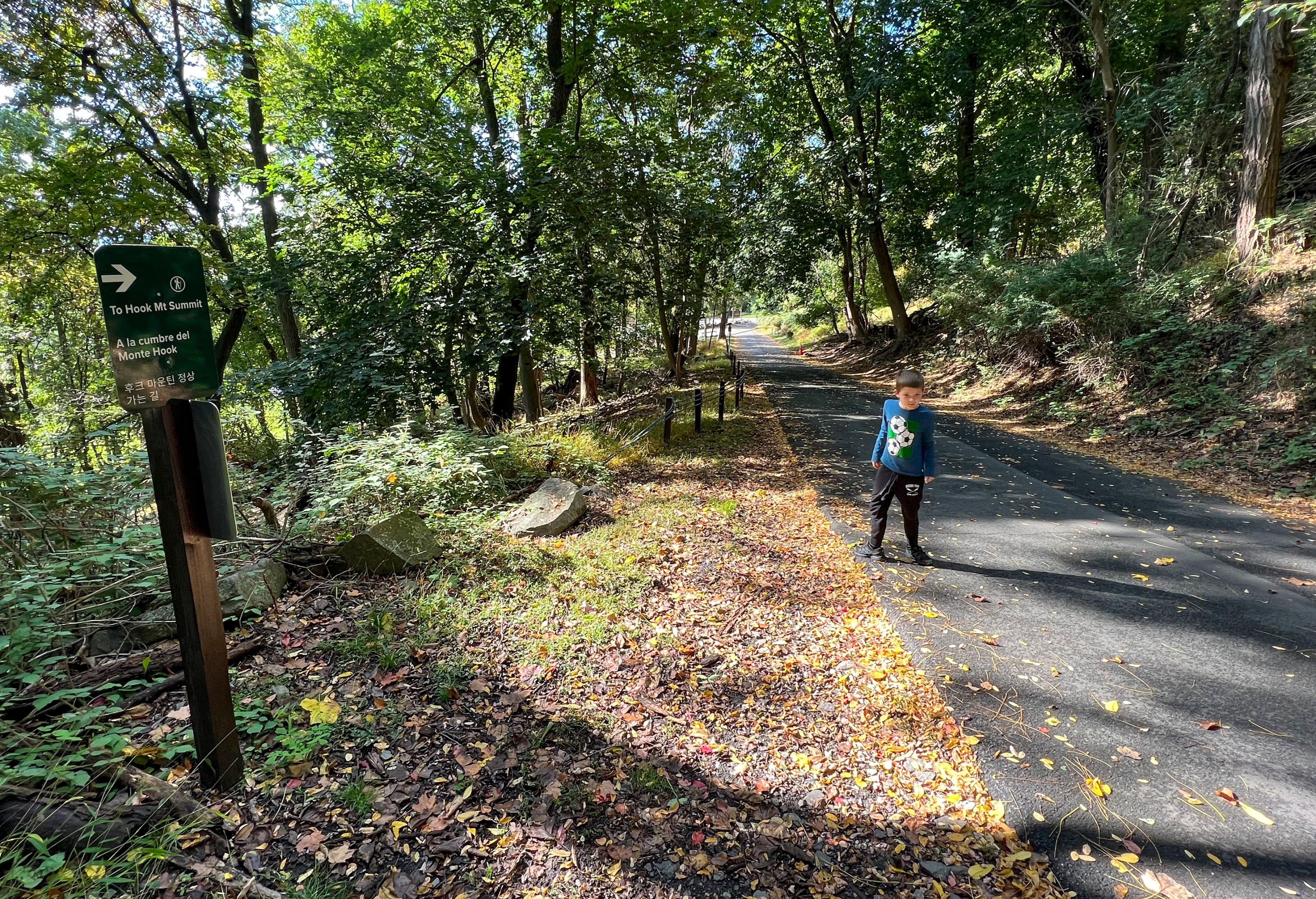
Look for the two white blazes indicating where the trail leaves the road and continues into the woods.
This next section of the trail took several years of hard, manual labor to construct by trail volunteers and it is an impressive feat. Notice how easily the trail traverses this very rocky, steep section with large boulders all around you. A description of the work involved is at the top of this page.
This trail ends at a beautifully built stone staircase.
You’ve now reached the teal-blazed Long Path.
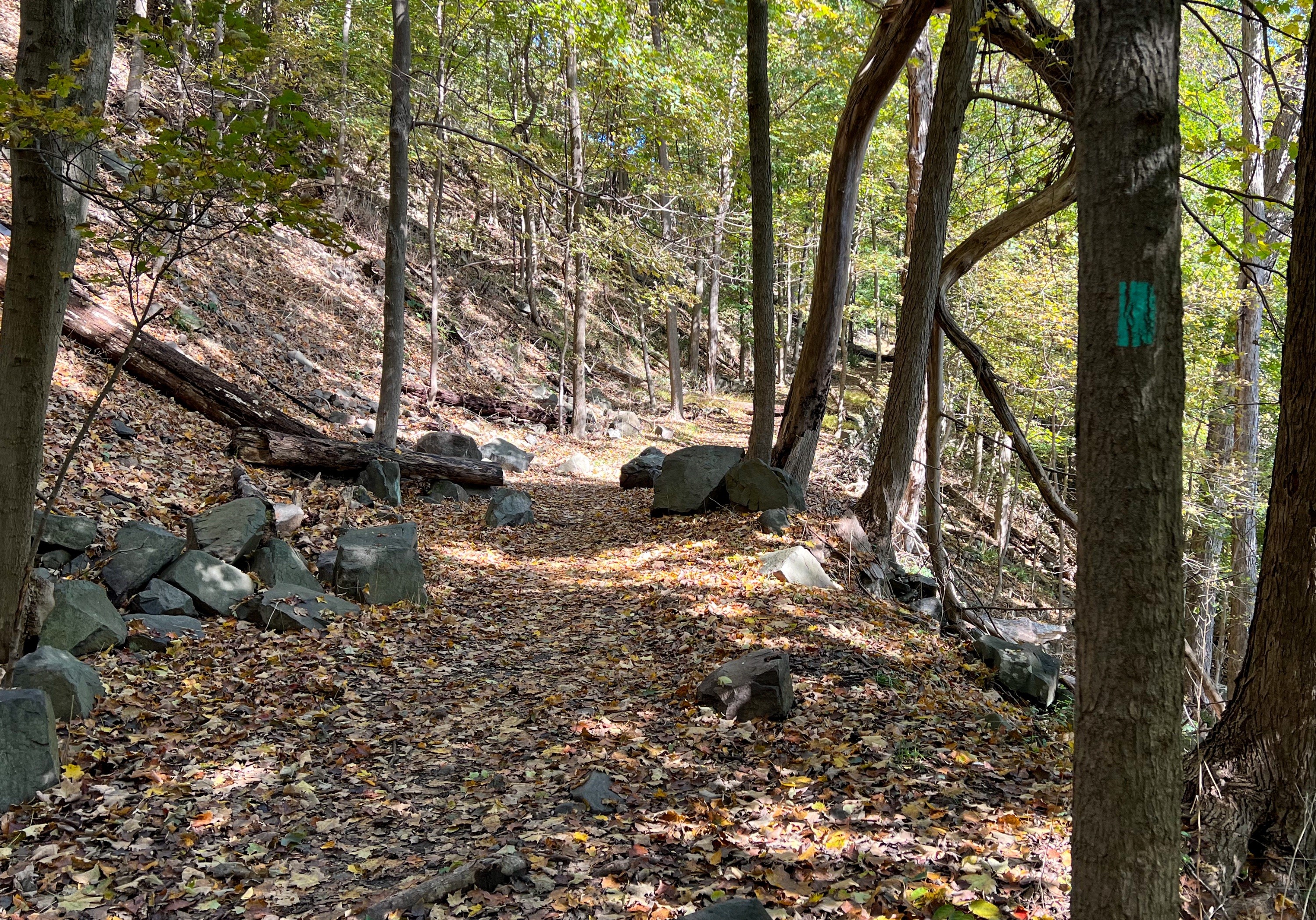
Turn right and follow the Long Path as it climbs steadily up Hook Mountain. You’ll start to get some really nice partial views along the way as you gain elevation.
Eventually you’ll reach the first major viewpoint at a clearing that’s often used for bird watching. This is a great spot to stop for a break and enjoy the incredible views of the Hudson River and Rockland Lake.
This area – and all along Hook Mountain – is full of prickly pear cactus – the sun exposure and steep inclines provide the dry soils and sunny weather the cactus likes.
Continue along the trail, which offers a multitude of viewpoints along the way.
Some of the views are particularly dramatic as the trail hugs the edge of the cliff.
Keep going. You guessed it – more views.
Not far beyond this point is a US Army Corps survey marker along the trail.

The trail now reenters the woods for a while. Eventually you’ll see a large stone wall along your left side, which appears to be one side of an old road built through the area.
Just beyond here, look for the trail to fork at a spot that may be marked with a rock pile.

The Long Path continues to the left, but we’ll take the unmaintained footpath to the right which soon exits the woods as you reach the cliff. The trail now follows the edge of the cliff for a few hundred feet. This was my favorite part of the trail and I’m not sure why the Long Path isn’t routed this way, but I wouldn’t miss this section.
You’re likely to see a lot of birds riding the thermal currents here.
From here, take the unmarked trail downhill back towards the Long Path. The trail now descends and you’ll pass the foundation and remnants of an old building.
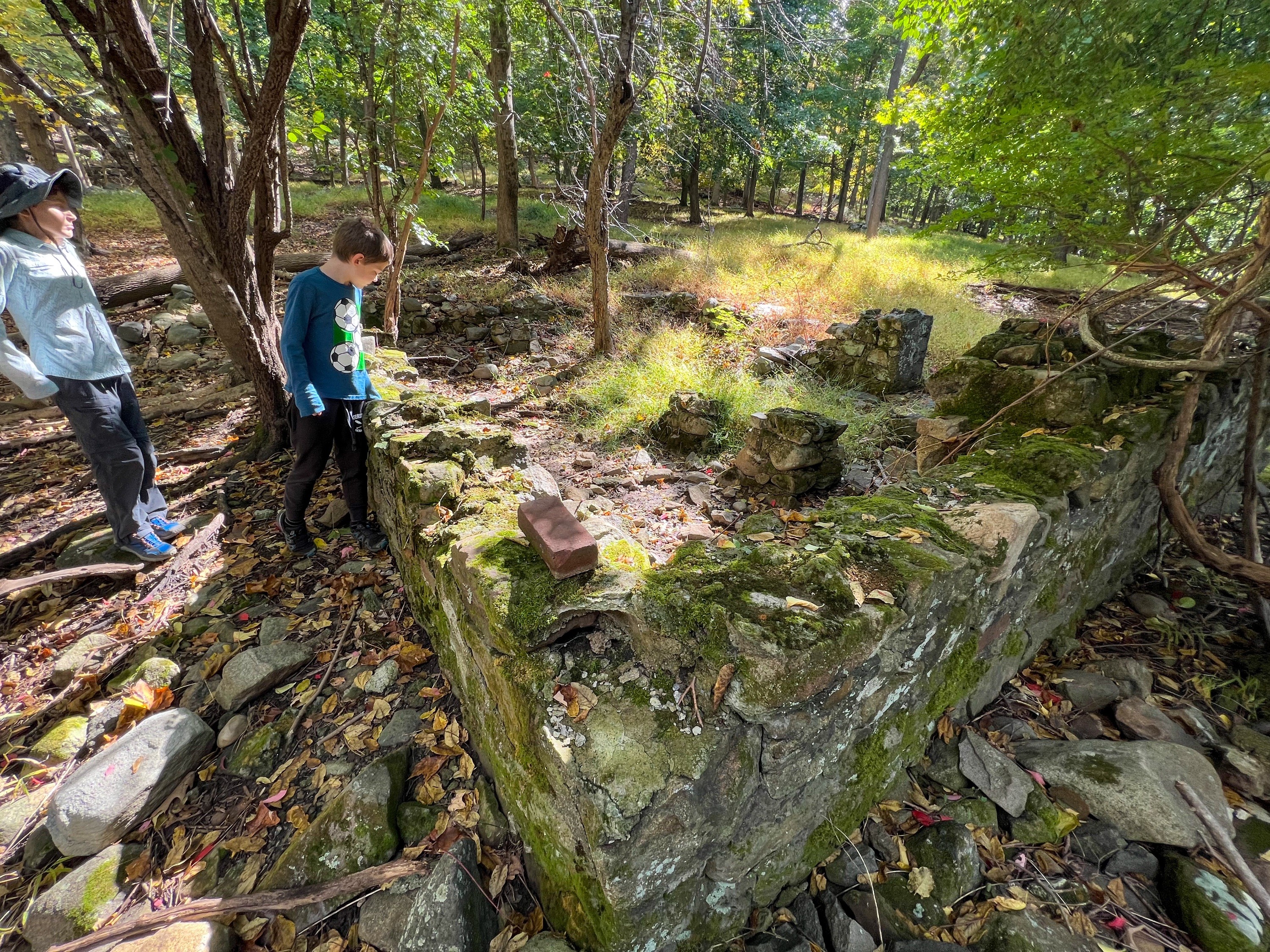
The trail continues to descend and soon reaches Landing Road. Turn right onto the road and walk a short distance. You’ll pass a gate indicating that access is for authorized vehicles only.
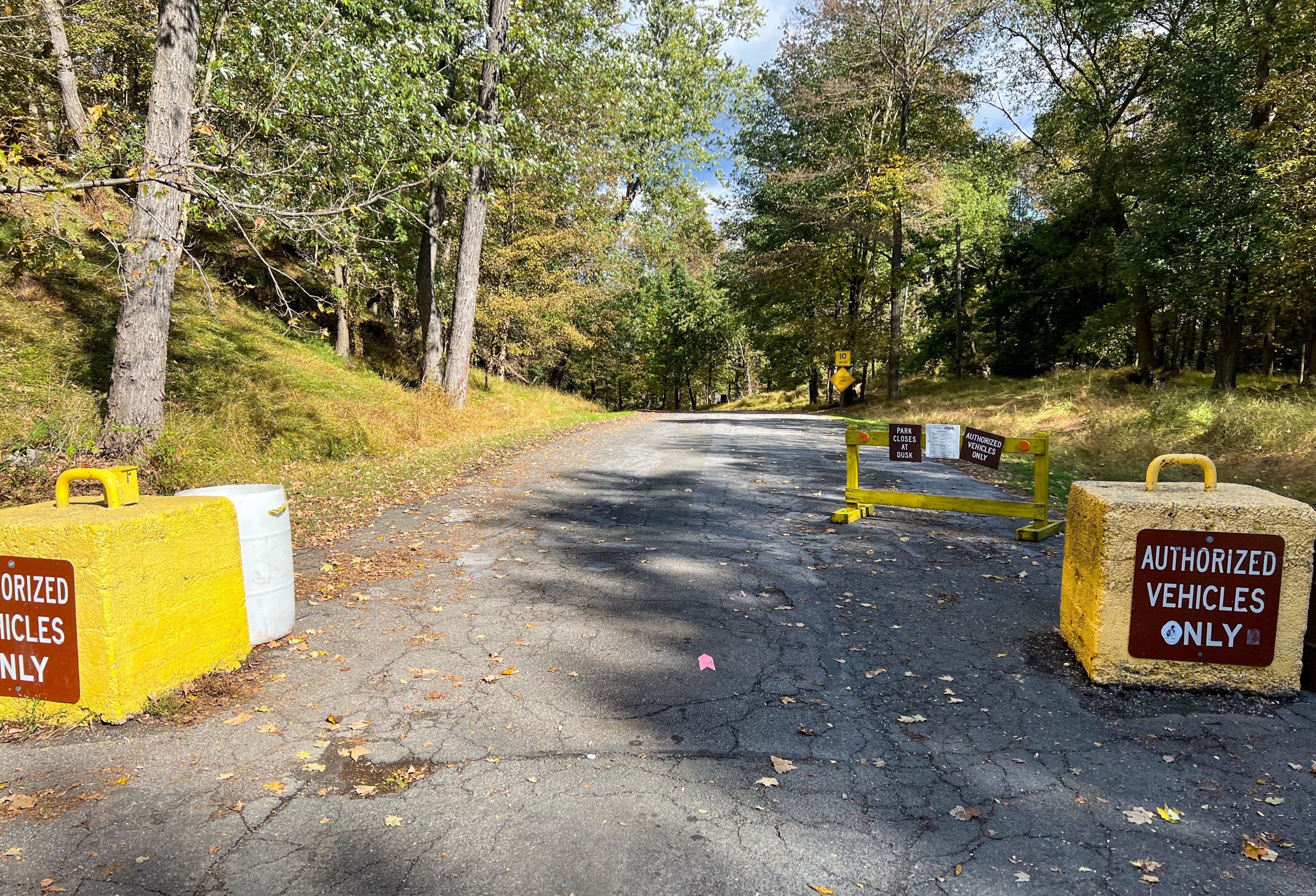
Just beyond the gate on your right is a sign from Rockland Lake State Park with information on how the lake and Hudson River played a key role in ice production in the 1860s.
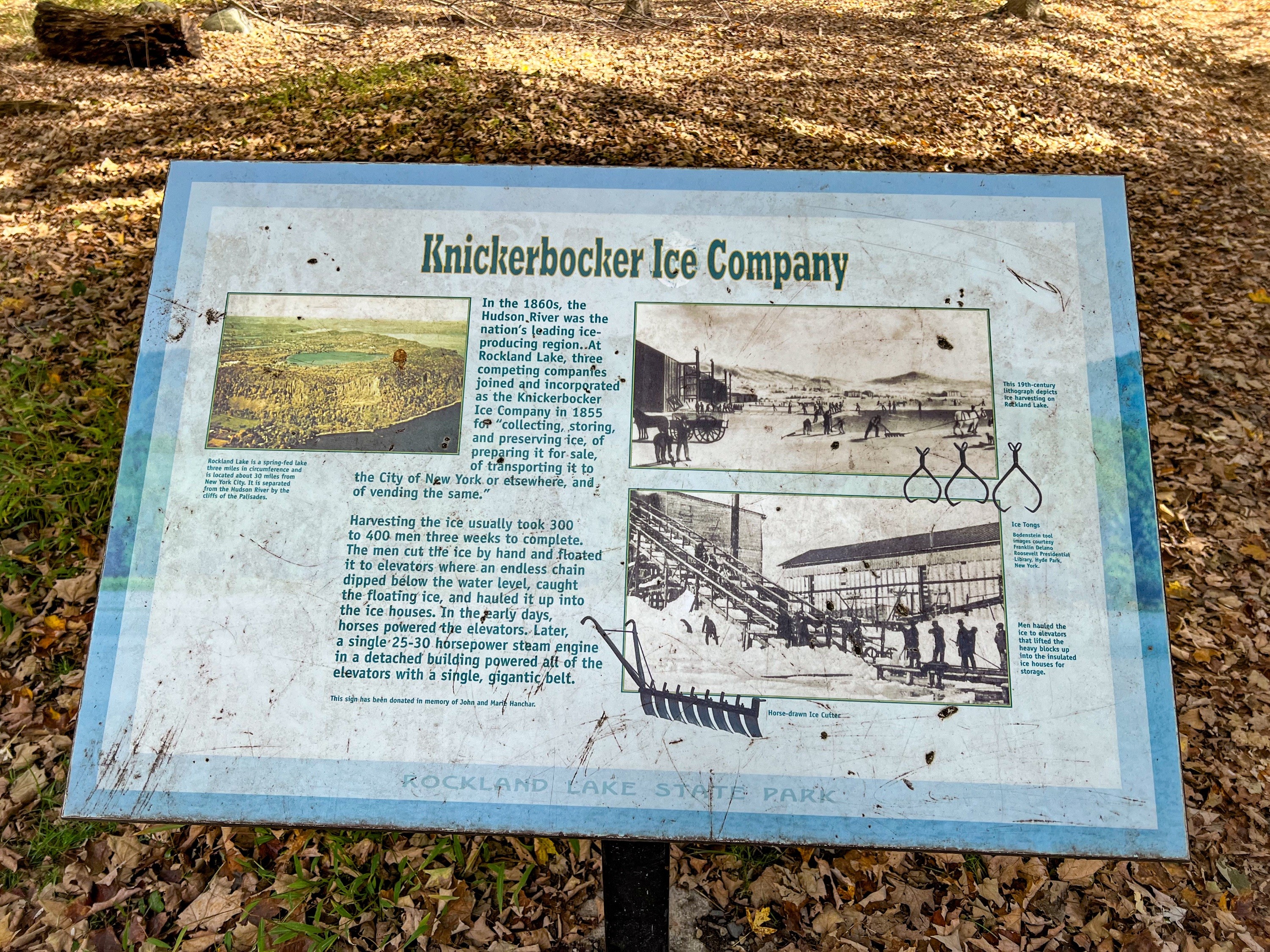
Follow the road downhill. At a fork with a less maintained trail, stay left, but if you do take a few steps to the right at this fork, you can get a nice view of the cliffs that you were just on top of.
Keep following the paved path as it descends and eventually joins up with the Nyack River Trail along the riverfront.
You’ll follow the river trail for 1.5 miles back to the parking area.


